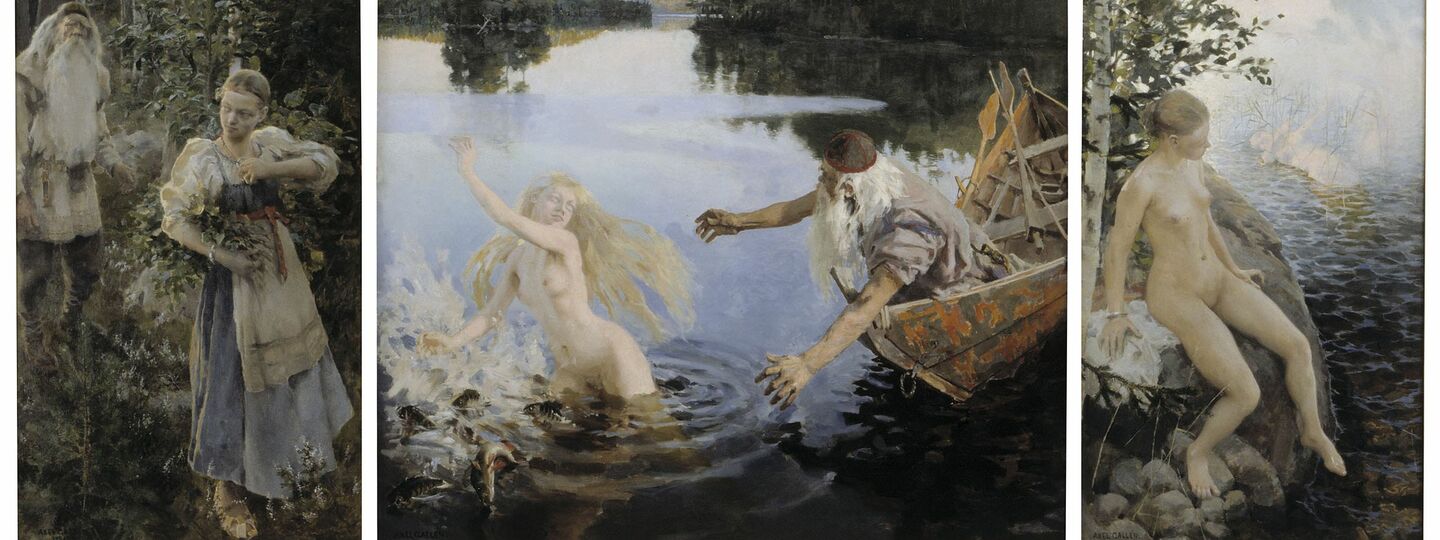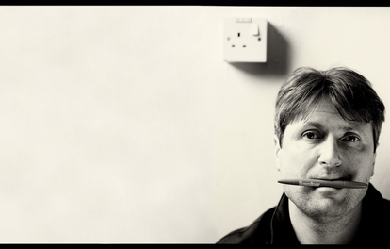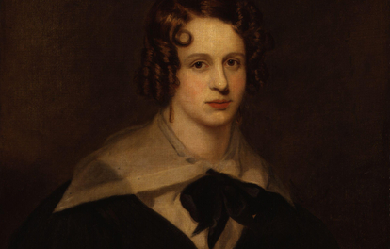
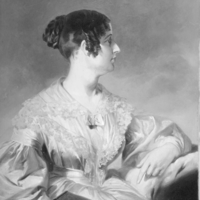
Felicia Dorothea Hemans (25 September 1793 – 16 May 1835) was an English poet. Her first poems, dedicated to the Prince of Wales, were published in Liverpool in 1808, when she was fourteen, arousing the interest of poet Percy Bysshe Shelley, who briefly corresponded with her. She quickly followed them up with “England and Spain” (1808) and “The Domestic Affections” (1812).
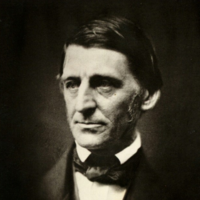
Ralph Waldo Emerson (May 25, 1803 – April 27, 1882) was an American essayist, lecturer, and poet, who led the Transcendentalist movement of the mid-19th century. He was seen as a champion of individualism and a prescient critic of the countervailing pressures of society, and he disseminated his thoughts through dozens of published essays and more than 1, public lectures across the United States. Emerson gradually moved away from the religious and social beliefs of his contemporaries, formulating and expressing the philosophy of Transcendentalism in his 1836 essay, Nature. Following this ground-breaking work, he gave a speech entitled The American Scholar in 1837, which Oliver Wendell Holmes, Sr. considered to be America's "Intellectual Declaration of Independence". Emerson wrote most of his important essays as lectures first, then revised them for print. His first two collections of essays – Essays: First Series and Essays: Second Series, published respectively in 1841 and 1844 – represent the core of his thinking, and include such well-known essays as Self-Reliance, The Over-Soul, Circles, The Poet and Experience. Together with Nature, these essays made the decade from the mid-1830s to the mid-1840s Emerson's most fertile period. Emerson wrote on a number of subjects, never espousing fixed philosophical tenets, but developing certain ideas such as individuality, freedom, the ability for humankind to realize almost anything, and the relationship between the soul and the surrounding world. Emerson's "nature" was more philosophical than naturalistic; "Philosophically considered, the universe is composed of Nature and the Soul." While his writing style can be seen as somewhat impenetrable, and was thought so even in his own time, Emerson's essays remain among the linchpins of American thinking, and Emerson's work has greatly influenced the thinkers, writers and poets that have followed him. When asked to sum up his work, he said his central doctrine was "the infinitude of the private man.” Early life, family, and education Emerson was born in Boston, Massachusetts on May 25, 1803, son of Ruth Haskins and the Rev. William Emerson, a Unitarian minister. He was named after his mother's brother Ralph and the father's great-grandmother Rebecca Waldo. Ralph Waldo was the second of five sons who survived into adulthood; the others were William, Edward, Robert Bulkeley, and Charles. Three other children—Phebe, John Clarke, and Mary Caroline–died in childhood. The young Ralph Waldo Emerson's father died from stomach cancer on May 12, 1811, less than two weeks before Emerson's eighth birthday. Emerson was raised by his mother, with the help of the other women in the family; his aunt Mary Moody Emerson in particular had a profound effect on Emerson. She lived with the family off and on, and maintained a constant correspondence with Emerson until her death in 1863. Emerson's formal schooling began at the Boston Latin School in 1812 when he was nine. In October 1817, at 14, Emerson went to Harvard College and was appointed freshman messenger for the president, requiring Emerson to fetch delinquent students and send messages to faculty. Midway through his junior year, Emerson began keeping a list of books he had read and started a journal in a series of notebooks that would be called "Wide World". He took outside jobs to cover his school expenses, including as a waiter for the Junior Commons and as an occasional teacher working with his uncle Samuel in Waltham, Massachusetts. By his senior year, Emerson decided to go by his middle name, Waldo. Emerson served as Class Poet; as was custom, he presented an original poem on Harvard's Class Day, a month before his official graduation on August 29, 1821, when he was 18. He did not stand out as a student and graduated in the exact middle of his class of 59 people. In 1826, faced with poor health, Emerson went to seek out warmer climates. He first went to Charleston, South Carolina, but found the weather was still too cold. He then went further south, to St. Augustine, Florida, where he took long walks on the beach, and began writing poetry. While in St. Augustine, he made the acquaintance of Prince Achille Murat. Murat, the nephew of Napoleon Bonaparte, was only two years his senior; they became extremely good friends and enjoyed one another's company. The two engaged in enlightening discussions on religion, society, philosophy, and government, and Emerson considered Murat an important figure in his intellectual education. While in St. Augustine, Emerson had his first experience of slavery. At one point, he attended a meeting of the Bible Society while there was a slave auction taking place in the yard outside. He wrote, "One ear therefore heard the glad tidings of great joy, whilst the other was regaled with 'Going, gentlemen, going’!” Early career After Harvard, Emerson assisted his brother William in a school for young women established in their mother's house, after he had established his own school in Chelmsford, Massachusetts; when his brother William went to Göttingen to study divinity, Emerson took charge of the school. Over the next several years, Emerson made his living as a schoolmaster, then went to Harvard Divinity School. Emerson's brother Edward, two years younger than he, entered the office of lawyer Daniel Webster, after graduating Harvard first in his class. Edward's physical health began to deteriorate and he soon suffered a mental collapse as well; he was taken to McLean Asylum in June 1828 at age 23. Although he recovered his mental equilibrium, he died in 1834 from apparently longstanding tuberculosis. Another of Emerson's bright and promising younger brothers, Charles, born in 1808, died in 1836, also of tuberculosis, making him the third young person in Emerson's innermost circle to die in a period of a few years. Emerson met his first wife, Ellen Louisa Tucker, in Concord, New Hampshire on Christmas Day, 1827, and married her when she was 18. The couple moved to Boston, with Emerson's mother Ruth moving with them to help take care of Ellen, who was already sick with tuberculosis. Less than two years later, Ellen died at the age of 20 on February 8, 1831, after uttering her last words: "I have not forgot the peace and joy." Emerson was heavily affected by her death and visited her grave in Roxbury daily. In a journal entry dated March 29, 1832, Emerson wrote, "I visited Ellen's tomb & opened the coffin." Boston's Second Church invited Emerson to serve as its junior pastor and he was ordained on January 11, 1829. His initial salary was $1, a year, increasing to $1, in July, but with his church role he took on other responsibilities: he was chaplain to the Massachusetts legislature, and a member of the Boston school committee. His church activities kept him busy, though during this period, facing the imminent death of his wife, he began to doubt his own beliefs. After his wife's death, he began to disagree with the church's methods, writing in his journal in June 1832: "I have sometimes thought that, in order to be a good minister, it was necessary to leave the ministry. The profession is antiquated. In an altered age, we worship in the dead forms of our forefathers." His disagreements with church officials over the administration of the Communion service and misgivings about public prayer eventually led to his resignation in 1832. As he wrote, "This mode of commemorating Christ is not suitable to me. That is reason enough why I should abandon it." As one Emerson scholar has pointed out, "Doffing the decent black of the pastor, he was free to choose the gown of the lecturer and teacher, of the thinker not confined within the limits of an institution or a tradition." Emerson toured Europe in 1833 and later wrote of his travels in English Traits (1857). He left aboard the brig Jasper on Christmas Day, 1832, sailing first to Malta. During his European trip, he spent several months in Italy, visiting Rome, Florence and Venice, among other cities. When in Rome, he met with John Stuart Mill, who gave him a letter of recommendation to meet Thomas Carlyle. He went to Switzerland, and had to be dragged by fellow passengers to visit Voltaire's home in Ferney, "protesting all the way upon the unworthiness of his memory." He then went on to Paris, a "loud modern New York of a place,", where he visited the Jardin des Plantes. He was greatly moved by the organization of plants according to Jussieu's system of classification, and the way all such objects were related and connected. As Richardson says, "Emerson's moment of insight into the interconnectedness of things in the Jardin des Plantes was a moment of almost visionary intensity that pointed him away from theology and toward science." Moving north to England, Emerson met William Wordsworth, Samuel Taylor Coleridge, and Thomas Carlyle. Carlyle in particular was a strong influence on Emerson; Emerson would later serve as an unofficial literary agent in the United States for Carlyle, and in March 1835, he tried to convince Carlyle to come to America to lecture. The two would maintain correspondence until Carlyle's death in 1881. Emerson returned to the United States on October 9, 1833, and lived with his mother in Newton, Massachusetts, until October, 1834, when he moved to Concord, Massachusetts, to live with his step-grandfather Dr. Ezra Ripley at what was later named The Old Manse. Seeing the budding Lyceum movement, which provided lectures on all sorts of topics, Emerson saw a possible career as a lecturer. On November 5, 1833, he made the first of what would eventually be some 1, lectures, discussing The Uses of Natural History in Boston. This was an expanded account of his experience in Paris. In this lecture, he set out some of his important beliefs and the ideas he would later develop in his first published essay Nature: Nature is a language and every new fact one learns is a new word; but it is not a language taken to pieces and dead in the dictionary, but the language put together into a most significant and universal sense. I wish to learn this language, not that I may know a new grammar, but that I may read the great book that is written in that tongue. On January 24, 1835, Emerson wrote a letter to Lydia Jackson proposing marriage. Her acceptance reached him by mail on the 28th. In July 1835, he bought a house on the Cambridge and Concord Turnpike in Concord, Massachusetts which he named "Bush"; it is now open to the public as the Ralph Waldo Emerson House. Emerson quickly became one of the leading citizens in the town. He gave a lecture to commemorate the 200th anniversary of the town of Concord on September 12, 1835. Two days later, he married Lydia Jackson in her home town of Plymouth, Massachusetts, and moved to the new home in Concord together with Emerson's mother on September 15. Emerson quickly changed his wife's name to Lidian, and would call her Queenie, and sometimes Asia, and she called him Mr. Emerson. Their children were Waldo, Ellen, Edith, and Edward Waldo Emerson. Ellen was named for his first wife, at Lidian's suggestion. Emerson was poor when he was at Harvard, and later supported his family for much of his life. He inherited a fair amount of money after his first wife's death, though he had to file a lawsuit against the Tucker family in 1836 to get it. He received $11, in May 1834, and a further $11,. in July 1837. In 1834, he considered that he had an income of $1, a year from the initial payment of the estate, equivalent to what he had earned as a pastor. Literary career and Transcendentalism On September 8, 1836, the day before the publication of Nature, Emerson met with Henry Hedge, George Putnam and George Ripley to plan periodic gatherings of other like-minded intellectuals. This was the beginning of the Transcendental Club, which served as a center for the movement. Its first official meeting was held on September 19, 1836. On September 1, 1837, women attended a meeting of the Transcendental Club for the first time. Emerson invited Margaret Fuller, Elizabeth Hoar and Sarah Ripley for dinner at his home before the meeting to ensure that they would be present for the evening get-together. Fuller would prove to be an important figure in Transcendentalism. Emerson anonymously published his first essay, Nature, on September 9, 1836. A year later, on August 31, 1837, Emerson delivered his now-famous Phi Beta Kappa address, "The American Scholar", then known as "An Oration, Delivered before the Phi Beta Kappa Society at Cambridge"; it was renamed for a collection of essays (which included the first general publication of "Nature") in 1849. Friends urged him to publish the talk, and he did so, at his own expense, in an edition of 500 copies, which sold out in a month. In the speech, Emerson declared literary independence in the United States and urged Americans to create a writing style all their own and free from Europe. James Russell Lowell, who was a student at Harvard at the time, called it "an event without former parallel on our literary annals". Another member of the audience, Reverend John Pierce, called it "an apparently incoherent and unintelligible address". In 1837, Emerson befriended Henry David Thoreau. Though they had likely met as early as 1835, in the fall of 1837, Emerson asked Thoreau, "Do you keep a journal?" The question went on to have a lifelong inspiration for Thoreau. Emerson's own journal comes to 16 large volumes, in the definitive Harvard University Press edition published between 1960 and 1982. Some scholars consider the journal to be Emerson's key literary work. In March 1837, Emerson gave a series of lectures on The Philosophy of History at Boston's Masonic Temple. This was the first time he managed a lecture series on his own, and was the beginning of his serious career as a lecturer. The profits from this series of lectures were much larger than when he was paid by an organization to talk, and Emerson continued to manage his own lectures often throughout his lifetime. He would eventually give as many as 80 lectures a year, traveling across the northern part of the United States. He traveled as far as St. Louis, Des Moines, Minneapolis, and California. On July 15, 1838, Emerson was invited to Divinity Hall, Harvard Divinity School for the school's graduation address, which came to be known as his "Divinity School Address". Emerson discounted Biblical miracles and proclaimed that, while Jesus was a great man, he was not God: historical Christianity, he said, had turned Jesus into a "demigod, as the Orientals or the Greeks would describe Osiris or Apollo". His comments outraged the establishment and the general Protestant community. For this, he was denounced as an atheist, and a poisoner of young men's minds. Despite the roar of critics, he made no reply, leaving others to put forward a defense. He was not invited back to speak at Harvard for another thirty years. The Transcendental group began to publish its flagship journal, The Dial, in July 1840. They planned the journal as early as October 1839, but work did not begin until the first week of 1840. George Ripley was its managing editor and Margaret Fuller was its first editor, having been hand-chosen by Emerson after several others had declined the role. Fuller stayed on for about two years and Emerson took over, utilizing the journal to promote talented young writers including Ellery Channing and Thoreau. It was in 1841 that Emerson published Essays, his second book, which included the famous essay, "Self-Reliance". His aunt called it a "strange medley of atheism and false independence", but it gained favorable reviews in London and Paris. This book, and its popular reception, more than any of Emerson's contributions to date laid the groundwork for his international fame. In January 1842 Emerson's first son Waldo died from scarlet fever. Emerson wrote of his grief in the poem "Threnody" ("For this losing is true dying"), and the essay "Experience". That same month, William James was born, and Emerson agreed to be his godfather. Bronson Alcott announced his plans in November 1842 to find "a farm of a hundred acres in excellent condition with good buildings, a good orchard and grounds". Charles Lane purchased a 90-acre (360, m2) farm in Harvard, Massachusetts, in May 1843 for what would become Fruitlands, a community based on Utopian ideals inspired in part by Transcendentalism. The farm would run based on a communal effort, using no animals for labor; its participants would eat no meat and use no wool or leather. Emerson said he felt "sad at heart" for not engaging in the experiment himself. Even so, he did not feel Fruitlands would be a success. "Their whole doctrine is spiritual", he wrote, "but they always end with saying, Give us much land and money". Even Alcott admitted he was not prepared for the difficulty in operating Fruitlands. "None of us were prepared to actualize practically the ideal life of which we dreamed. So we fell apart", he wrote. After its failure, Emerson helped buy a farm for Alcott's family in Concord which Alcott named "Hillside". The Dial ceased publication in April 1844; Horace Greeley reported it as an end to the "most original and thoughtful periodical ever published in this country". (An unrelated magazine of the same name would be published in several periods through 1929.) In 1844, Emerson published his second collection of essays, entitled "Essays: Second Series." This collection included "The Poet," "Experience," "Gifts," and an essay entitled "Nature," a different work from the 1836 essay of the same name. Emerson made a living as a popular lecturer in New England and much of the rest of the country. He had begun lecturing in 1833; by the 1850s he was giving as many as 80 per year. He addressed the Boston Society for the Diffusion of Useful Knowledge and the Gloucester Lyceum, among others. Emerson spoke on a wide variety of subjects and many of his essays grew out of his lectures. He charged between $10 and $50 for each appearance, bringing him as much as $2, in a typical winter "season". This was more than his earnings from other sources. In some years, he earned as much as $900 for a series of six lectures, and in another, for a winter series of talks in Boston, he netted $1,. He eventually gave some 1, lectures in his lifetime. His earnings allowed him to expand his property, buying 11 acres (45, m2) of land by Walden Pond and a few more acres in a neighboring pine grove. He wrote that he was "landlord and waterlord of 14 acres, more or less". Emerson was introduced to Indian philosophy when reading the works of French philosopher Victor Cousin. In 1845, Emerson's journals show he was reading the Bhagavad Gita and Henry Thomas Colebrooke's Essays on the Vedas. Emerson was strongly influenced by the Vedas, and much of his writing has strong shades of nondualism. One of the clearest examples of this can be found in his essay "The Over-soul”: We live in succession, in division, in parts, in particles. Meantime within man is the soul of the whole; the wise silence; the universal beauty, to which every part and particle is equally related, the eternal ONE. And this deep power in which we exist and whose beatitude is all accessible to us, is not only self-sufficing and perfect in every hour, but the act of seeing and the thing seen, the seer and the spectacle, the subject and the object, are one. We see the world piece by piece, as the sun, the moon, the animal, the tree; but the whole, of which these are shining parts, is the soul. From 1847 to 1848, he toured England, Scotland, and Ireland. He also visited Paris between the February Revolution and the bloody June Days. When he arrived, he saw the stumps where trees had been cut down to form barricades in the February riots. On May 21 he stood on the Champ de Mars in the midst of mass celebrations for concord, peace and labor. He wrote in his journal: "At the end of the year we shall take account, & see if the Revolution was worth the trees." In February 1852 Emerson and James Freeman Clarke and William Henry Channing edited an edition of the works and letters of Margaret Fuller, who had died in 1850. Within a week of her death, her New York editor Horace Greeley suggested to Emerson that a biography of Fuller, to be called Margaret and Her Friends, be prepared quickly "before the interest excited by her sad decease has passed away". Published with the title The Memoirs of Margaret Fuller Ossoli, Fuller's words were heavily censored or rewritten. The three editors were not concerned about accuracy; they believed public interest in Fuller was temporary and that she would not survive as a historical figure. Even so, for a time, it was the best-selling biography of the decade and went through thirteen editions before the end of the century. Walt Whitman published the innovative poetry collection Leaves of Grass in 1855 and sent a copy to Emerson for his opinion. Emerson responded positively, sending a flattering five-page letter as a response. Emerson's approval helped the first edition of Leaves of Grass stir up significant interest and convinced Whitman to issue a second edition shortly thereafter. This edition quoted a phrase from Emerson's letter, printed in gold leaf on the cover: "I Greet You at the Beginning of a Great Career". Emerson took offense that this letter was made public and later became more critical of the work. Civil War years Emerson was staunchly anti-slavery, but he did not appreciate being in the public limelight and was hesitant about lecturing on the subject. He did, however, give a number of lectures during the pre-Civil War years, beginning as early as November, 1837. A number of his friends and family members were more active abolitionists than he, at first, but from 1844 on, he took a more active role in opposing slavery. He gave a number of speeches and lectures, and notably welcomed John Brown to his home during Brown's visits to Concord. He voted for Abraham Lincoln in 1860, but Emerson was disappointed that Lincoln was more concerned about preserving the Union than eliminating slavery outright. Once the American Civil War broke out, Emerson made it clear that he believed in immediate emancipation of the slaves. Around this time, in 1860, Emerson published The Conduct of Life, his final original collection of essays. In this book, Emerson "grappled with some of the thorniest issues of the moment," and "his experience in the abolition ranks is a telling influence in his conclusions. In the book's opening essay, Fate, Emerson wrote, "The question of the times resolved itself into a practical question of the conduct of life. How shall I live?" Emerson visited Washington, D.C, at the end of January, 1862. He gave a public lecture at the Smithsonian on January 31, 1862, and declared: "The South calls slavery an institution... I call it destitution... Emancipation is the demand of civilization". The next day, February 1, his friend Charles Sumner took him to meet Lincoln at the White House. Lincoln was familiar with Emerson's work, having previously seen him lecture. Emerson's misgivings about Lincoln began to soften after this meeting. In 1865, he spoke at a memorial service held for Lincoln in Concord: "Old as history is, and manifold as are its tragedies, I doubt if any death has caused so much pain as this has caused, or will have caused, on its announcement." Emerson also met a number of high-ranking government officials, including Salmon P. Chase, the secretary of the treasury, Edward Bates, the attorney general, Edwin M. Stanton, the secretary of war, Gideon Welles, the secretary of the navy, and William Seward, the secretary of state. On May 6, 1862, Emerson's protégé Henry David Thoreau died of tuberculosis at the age of 44 and Emerson delivered his eulogy. Emerson would continuously refer to Thoreau as his best friend, despite a falling out that began in 1849 after Thoreau published A Week on the Concord and Merrimack Rivers. Another friend, Nathaniel Hawthorne, died two years after Thoreau in 1864. Emerson served as one of the pallbearers as Hawthorne was buried in Concord, as Emerson wrote, "in a pomp of sunshine and verdure". He was elected a Fellow of the American Academy of Arts and Sciences in 1864. Final years and death Starting in 1867, Emerson's health began declining; he wrote much less in his journals. Beginning as early as the summer of 1871 or in the spring of 1872, Emerson started having memory problems and suffered from aphasia. By the end of the decade, he forgot his own name at times and, when anyone asked how he felt, he responded, "Quite well; I have lost my mental faculties, but am perfectly well". Emerson's Concord home caught fire on July 24, 1872; Emerson called for help from neighbors and, giving up on putting out the flames, all attempted to save as many objects as possible. The fire was put out by Ephraim Bull, Jr., the one-armed son of Ephraim Wales Bull. Donations were collected by friends to help the Emersons rebuild, including $5, gathered by Francis Cabot Lowell, another $10, collected by LeBaron Russell Briggs, and a personal donation of $1, from George Bancroft. Support for shelter was offered as well; though the Emersons ended up staying with family at the Old Manse, invitations came from Anne Lynch Botta, James Elliot Cabot, James Thomas Fields and Annie Adams Fields. The fire marked an end to Emerson's serious lecturing career; from then on, he would lecture only on special occasions and only in front of familiar audiences. While the house was being rebuilt, Emerson took a trip to England, continental Europe, and Egypt. He left on October 23, 1872, along with his daughter Ellen while his wife Lidian spent time at the Old Manse and with friends. Emerson and his daughter Ellen returned to the United States on the ship Olympus along with friend Charles Eliot Norton on April 15, 1873. Emerson's return to Concord was celebrated by the town and school was canceled that day. In late 1874 Emerson published an anthology of poetry called Parnassus, which included poems by Anna Laetitia Barbauld, Julia Caroline Dorr, Jean Ingelow, Lucy Larcom, Jones Very, as well as Thoreau and several others. The anthology was originally prepared as early as the fall of 1871 but was delayed when the publishers asked for revisions. The problems with his memory had become embarrassing to Emerson and he ceased his public appearances by 1879. As Holmes wrote, "Emerson is afraid to trust himself in society much, on account of the failure of his memory and the great difficulty he finds in getting the words he wants. It is painful to witness his embarrassment at times". On April 21, 1882, Emerson was diagnosed with pneumonia. He died on April 27, 1882. Emerson is buried in Sleepy Hollow Cemetery, Concord, Massachusetts. He was placed in his coffin wearing a white robe given by American sculptor Daniel Chester French. Lifestyle and beliefs Emerson's religious views were often considered radical at the time. He believed that all things are connected to God and, therefore, all things are divine. Critics believed that Emerson was removing the central God figure; as Henry Ware, Jr. said, Emerson was in danger of taking away "the Father of the Universe" and leaving "but a company of children in an orphan asylum". Emerson was partly influenced by German philosophy and Biblical criticism. His views, the basis of Transcendentalism, suggested that God does not have to reveal the truth but that the truth could be intuitively experienced directly from nature. Emerson did not become an ardent abolitionist until 1844, though his journals show he was concerned with slavery beginning in his youth, even dreaming about helping to free slaves. In June 1856, shortly after Charles Sumner, a United States Senator, was beaten for his staunch abolitionist views, Emerson lamented that he himself was not as committed to the cause. He wrote, "There are men who as soon as they are born take a bee-line to the axe of the inquisitor... Wonderful the way in which we are saved by this unfailing supply of the moral element". After Sumner's attack, Emerson began to speak out about slavery. "I think we must get rid of slavery, or we must get rid of freedom", he said at a meeting at Concord that summer. Emerson used slavery as an example of a human injustice, especially in his role as a minister. In early 1838, provoked by the murder of an abolitionist publisher from Alton, Illinois named Elijah Parish Lovejoy, Emerson gave his first public antislavery address. As he said, "It is but the other day that the brave Lovejoy gave his breast to the bullets of a mob, for the rights of free speech and opinion, and died when it was better not to live". John Quincy Adams said the mob-murder of Lovejoy "sent a shock as of any earthquake throughout this continent". However, Emerson maintained that reform would be achieved through moral agreement rather than by militant action. By August 1, 1844, at a lecture in Concord, he stated more clearly his support for the abolitionist movement. He stated, "We are indebted mainly to this movement, and to the continuers of it, for the popular discussion of every point of practical ethics". Emerson may have had erotic thoughts about at least one man. During his early years at Harvard, he found himself attracted to a young freshman named Martin Gay about whom he wrote sexually charged poetry. He also had a number of crushes on various women throughout his life, such as Anna Barker and Caroline Sturgis. Legacy As a lecturer and orator, Emerson—nicknamed the Concord Sage—became the leading voice of intellectual culture in the United States. Herman Melville, who had met Emerson in 1849, originally thought he had "a defect in the region of the heart" and a "self-conceit so intensely intellectual that at first one hesitates to call it by its right name", though he later admitted Emerson was "a great man". Theodore Parker, a minister and Transcendentalist, noted Emerson's ability to influence and inspire others: "the brilliant genius of Emerson rose in the winter nights, and hung over Boston, drawing the eyes of ingenuous young people to look up to that great new start, a beauty and a mystery, which charmed for the moment, while it gave also perennial inspiration, as it led them forward along new paths, and towards new hopes". Emerson's work not only influenced his contemporaries, such as Walt Whitman and Henry David Thoreau, but would continue to influence thinkers and writers in the United States and around the world down to the present. Notable thinkers who recognize Emerson's influence include Nietzsche and William James, Emerson's godson. "There is little disagreement that Emerson was the most influential writer of 19th-century America, though these days he is largely the concern of scholars. Walt Whitman, Henry David Thoreau and William James were all positive Emersonians, while Herman Melville, Nathaniel Hawthorne and Henry James were Emersonians in denial — while they set themselves in opposition to the sage, there was no escaping his influence. To T. S. Eliot, Emerson’s essays were an “encumbrance.” Waldo the Sage was eclipsed from 1914 until 1965, when he returned to shine, after surviving in the work of major American poets like Robert Frost, Wallace Stevens and Hart Crane." In his book The American Religion, Harold Bloom repeatedly refers to Emerson as "The prophet of the American Religion," which in the context of the book refers to indigenously American religions such as Mormonism and Christian Science, which arose largely in Emerson's lifetime, but also to Mainline Protestant churches that Bloom says have become in the United States more gnostic than their European counterparts. In The Western Canon, Harold Bloom compares Emerson to Michel de Montaigne: "The only equivalent reading experience that I know is to reread endlessly in the notebooks and journals of Ralph Waldo Emerson, the American version of Montaigne." Several of Emerson's poems were included in Bloom's The Best Poems of the English Language, although he wrote that none of the poems are as outstanding as the best of Emerson's essays, which Bloom listed as Self-Reliance, Circles, Experience, and "nearly all of Conduct of Life”. Namesakes * In May 2006, 168 years after Emerson delivered his "Divinity School Address," Harvard Divinity School announced the establishment of the Emerson Unitarian Universalist Association Professorship. Harvard has also named a building, Emerson Hall (1900), after him. * Emerson Hill, a neighborhood in the New York City borough of Staten Island, is named for his eldest brother, Judge William Emerson, who resided there from 1837 to 1864. * The Emerson String Quartet, formed in 1976, took their name from Ralph Waldo Emerson. * The Ralph Waldo Emerson Prize is awarded annually to high school students for essays on historical subjects. * Author Ralph Waldo Ellison (March 1, 1914 – April 16, 1994) was named after Emerson. References Wikipedia - http://en.wikipedia.org/wiki/Ralph_Waldo_Emerson
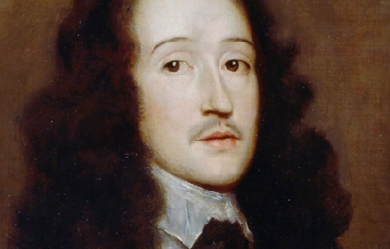
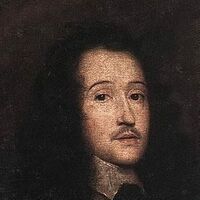
Richard Lovelace (1618–1657) was an English poet in the seventeenth century. He was a cavalier poet who fought on behalf of the king during the Civil war. His best known works are To Althea, from Prison, and To Lucasta, Going to the Warres. Early life and family Richard Lovelace was born in 1618. His exact birthplace is unknown, but it is documented that it was either Woolwich, Kent, or Holland. He was the oldest son of Sir William Lovelace and Anne Barne Lovelace and had four brothers and three sisters. His father was from an old distinguished military and legal family and the Lovelace family owned a considerable amount of property in Kent. His father, Sir William Lovelace, knt., was a member of the Virginia Company and an incorporator in the second Virginia Company in 1609. He was a soldier and he died during the war with Spain and Holland in the siege of Grol, a few days before the town fell. Richard was only 9 years old when his father died. Richard's father was the son of Sir William Lovelace and Elizabeth Aucher who was the daughter of Mabel Wroths and Edward Aucher, Esq. who inherited, under his father's Will, the manors of Bishopsbourne and Hautsborne. Elizabeth's nephew was Sir Anthony Aucher (1614 – 31 May 1692) an English politician and Cavalier during the English Civil War. He was the son of her brother Sir Anthony Aucher and his wife Hester Collett. Richard Lovelace's mother, Anne Barne (1587–1633), was the daughter of Sir William Barne and the granddaughter of Sir George Barne III (1532- d. 1593), the Lord Mayor of London and a prominent merchant and public official from London during the reign of Elizabeth I; and Anne Gerrard, daughter of Sir William Garrard, who was Lord Mayor of London in 1555. Richard Lovelace's mother was also the daughter of Anne Sandys and the granddaughter of Cicely Wilford and the Most Reverend Dr. Edwin Sandys, an Anglican church leader who successively held the posts of the Bishop of Worcester (1559–1570), Bishop of London (1570–1576), and the Archbishop of York (1576–1588). He was one of the translators of the Bishops' Bible. Anne Barne Lovelace married as her second husband, on 20 January 1630, at Greenwich, England, the Very Rev. Dr. Jonathan Browne They were the parents of one child, Anne Browne, who married Herbert Crofte, S.T.P. and D.D and were the parents of Sir Herbert Croft, 1st Baronet. His brother, Francis Lovelace (1621–1675), was the second governor of the New York colony appointed by the Duke of York, later King James II of England. He was also the great nephew of both George Sandys (2 March 1577 – March 1644), an English traveller, colonist and poet; and of Sir Edwin Sandys (9 December 1561 – October 1629), an English statesman and one of the founders of the London Company. In 1629, when Lovelace was eleven, he went to Sutton’s Foundation at Charterhouse School, then located in London. However, there is not a clear record that Lovelace actually attended because it is believed that he studied as a “boarder” because he did not need financial assistance like the “scholars”. He spent five years at Charterhouse, three of which were spent with Richard Crashaw, who also became a poet. On 5 May 1631, Lovelace was sworn in as a “Gentleman Wayter Extraordinary” to the King. This was an “honorary position for which one paid a fee”. He then went on to Gloucester Hall, Oxford, in 1634. Collegiate career Richard Lovelace attended Oxford University and he was praised by one of his contemporaries, Anthony Wood. for being “the most amiable and beautiful person that ever eye beheld; a person also of innate modesty, virtue and courtly deportment, which made him then, but especially after, when he retired to the great city, much admired and adored by the female sex" At the age of eighteen, during a three-week celebration at Oxford, he was granted the degree of Master of Arts. While at school, he tried to portray himself more as a social connoisseur rather than a scholar, continuing his image of being a Cavalier. Being a Cavalier poet, Lovelace wrote to praise a friend or fellow poet, to give advice in grief or love, to define a relationship, to articulate the precise amount of attention a man owes a woman, to celebrate beauty, and to persuade to love. Lovelace wrote a comedy, 'The Scholars,' and a tragedy titled 'The Soldiers,' while at Oxford. He then left for Cambridge University for a few months where he met Lord Goring, who led him into political trouble. Politics and prison Lovelace’s poetry was often influenced by his experiences with politics and association with important figures of his time. At the age of thirteen, Lovelace became a "Gentlemen Wayter Extraordinary" to the King and at nineteen he contributed a verse to a volume of elegies commemorating Princess Katharine. In 1639 Lovelace joined the regiment of Lord Goring, serving first as a senior ensign and later as a captain in the Bishops’ Wars. This experience inspired the 'Sonnet. To Generall Goring.' Upon his return to his home in Kent in 1640, Lovelace served as a country gentleman and a justice of the peace where he encountered firsthand the civil turmoil regarding religion and politics. In 1641 Lovelace led a group of men to seize and destroy a petition for the abolition of Episcopal rule, which had been signed by fifteen thousand people. The following year he presented the House of Commons with Dering’s pro-Royalist petition which was supposed to have been burned. These actions resulted in Lovelace’s first imprisonment. Shortly thereafter, he was released on bail with the stipulation that he avoid communication with the House of Commons without permission. This prevented Lovelace, who had done everything to prove himself during the Bishops’ Wars, from participating in the first phase of the English Civil War. However, this first experience of imprisonment did result in some good, as it brought him to write one of his finest and most beloved lyrics, 'To Althea, from Prison,' in which he illustrates his noble and paradoxical nature. Lovelace did everything he could to remain in the king’s favor despite his inability to participate in the war. Richard Lovelace did his part again during the political chaos of 1648, though it is unclear specifically what his actions were. He did, however, manage to warrant himself another prison sentence; this time for nearly a year. When he was released in April 1649, the king had been executed and Lovelace’s cause seemed lost. As in his previous incarceration, this experience led to creative production—this time in the form of spiritual freedom, as reflected in the release of his first volume of poetry, Lucasta. Literature Richard Lovelace first started writing while he was a student at Oxford and wrote almost 200 poems from that time until his death. His first work was a drama titled The Scholars. The play was never published; however, it was performed at college and then in London. In 1640, he wrote a tragedy titled 'The Soldier' which was based on his own military experience. When serving in the Bishops' Wars, he wrote the sonnet 'To Generall Goring,' which is a poem of Bacchanalian celebration rather than a glorification of military action. One of his extremely famous poems is 'To Lucasta, Going to the Warres,' written in 1640 and exposed in his first political action. During his first imprisonment in 1642, he wrote his most famous poem 'To Althea, From Prison.' Later on that year during his travels to Holland with General Goring, he wrote 'The Rose,' following with 'The Scrutiny' and on 14 May 1649, 'Lucasta' was published. He also wrote poems analyzing the details of many simple insects. 'The Ant,' 'The Grasse-hopper,' 'The Snayl,' 'The Falcon,' 'The Toad and Spyder.' Of these poems, 'The Grasse-hopper' is his most well-known. In 1660, after Lovelace died, "Lucasta: Postume Poems" was published; it contains 'A Mock-Song,' which has a much darker tone than his previous works. William Winstanley, who praised much of Richard Lovelace's works, thought highly of him and compared him to an idol; "I can compare no Man so like this Colonel Lovelace as Sir Philip Sidney,” of which it is in an Epitaph made of him; Nor is it fit that more I should aquaint Lest Men adore in one A Scholar, Souldier, Lover, and a Saint His most quoted excerpts are from the beginning of the last stanza of To Althea, From Prison: Stone walls do not a prison make, Nor iron bars a cage; Minds innocent and quiet take That for an hermitage and the end of To Lucasta. Going to the Warres: I could not love thee, dear, so much, Lov'd I not Honour more. Chronology 1618- Richard Lovelace born, either in Woolwich, Kent, or in Holland. 1629- King Charles I nominated “Thomas [probably Richard] Lovelace,” upon petition of Lovelace’s mother, Anne Barne Lovelace, to Sutton’s foundation at Charterhouse. 1631- On 5 May, Lovelace is made “Gentleman Wayter Extraordinary” to the King. 1634- On 27 June, he matriculates as Gentleman Commoner at Gloucester Hall, Oxford. 1635- Writes a comedy, The Scholars. 1636- On 31 August, the degree of M.A. is presented to him. 1637- On 4 October, he enters Cambridge University. 1638-1639- His first printed poems appear: ‘An Elegy” on Princess Katherine; prefaces to several books. 1639- He is senior ensign in General Goring’s regiment - in the First Scottish Expedition. “Sonnet to Goring.” 1640- Commissioned captain in the Second Scottish Expedition; writes a tragedy, The Soldier. He then returns home at 21, into the possession of his family’s property. 1641- Lovelace tears up a pro-Parliament, anti-Episcopacy petition at a meeting in Maidstone, Kent. 1642- 30 April, he presents the anti-Parliamentary Petition of Kent and is imprisoned at Gatehouse. After appealing, he is released on bail, 21 June. The Civil war begins on 22 August, he writes “To Althea, from Prison,” “To Lucasta.” In September, he goes to Holland with General Goring. He writes “The Rose.” 1642-1646-Probably serves in Holland and France with General Goring. He writes “The Scrutiny.” 1643- Sells some of his property to Richard Hulse. 1646- In October, he is wounded at Dunkirk, while fighting under the Great Conde against the Spaniards. 1647- He is admitted to the Freedom at the Painters’ Company. 1648-On 4 February, Lucasta is licensed at the Stationer’s Register. On 9 June, Lovelace is again imprisoned at Peterhouse. 1649- On 9 April, he is released from jail. He then sells the remaining family property and portraits to Richard Hulse. On 14 May, Lucasta is published. 1650-1657- Lovelace’s whereabouts unknown, though various poems are written. 1657- Lovelace dies. 1659-1660- Lucasta, Postume Poems is published. References Wikipedia - http://en.wikipedia.org/wiki/Richard_Lovelace
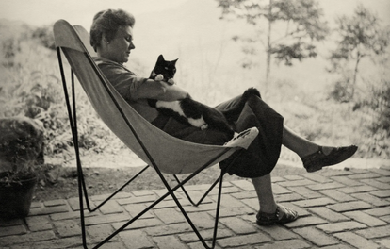
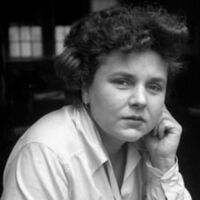
Elizabeth Bishop (February 8, 1911 – October 6, 1979) was an American poet, short-story writer, and recipient of the 1976 Neustadt International Prize for Literature. She was the Poet Laureate of the United States from 1949 to 1950, the Pulitzer Prize winner for Poetry in 1956 and the National Book Award winner in 1970.
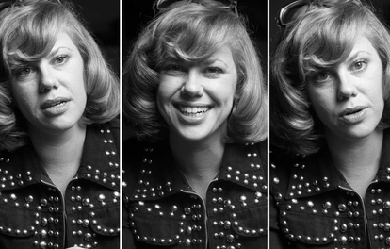
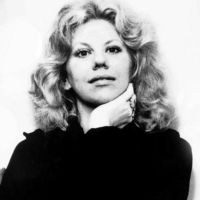
Erica Jong (née Mann; born March 26, 1942) is an American novelist and poet, known particularly for her 1973 novel Fear of Flying. The book became famously controversial for its attitudes towards female sexuality and figured prominently in the development of second-wave feminism. According to Washington Post, it has sold more than 20 million copies worldwide. Born in New York, she was the second of three daughters of Seymore Mann and Eda Mirsky. Attended New York’s Public High School of Music and Art in the 1950’s where she developed her passion for art and writing. As a student at Barnard College, she edited the Barnard Literary Magazine and created poetry programs for the Columbia University campus radio station.
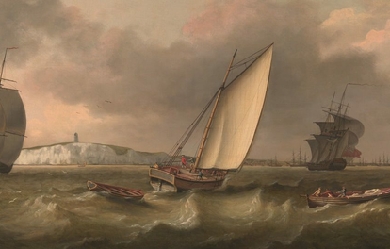
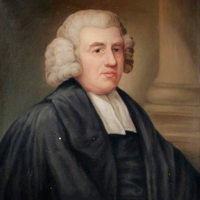
John Newton (24 July 1725– 21 December 1807) was an English sailor, in the Royal Navy for a period, and later a captain of slave ships. He became ordained as an evangelical Anglican cleric, served Olney, Buckinghamshire for two decades, and also wrote hymns, known for “Amazing Grace” and “Glorious Things of Thee Are Spoken”. Newton started his career at sea at a young age, and worked on slave ships in the slave trade for several years. After experiencing a period of Christian conversion Newton eventually renounced his trade and became a prominent supporter of abolitionism, living to see Britain’s abolition of the African slave trade in 1807. Early life John Newton was born in Wapping, London, in 1725, the son of Elizabeth (née Scatliff) and John Newton Sr., a shipmaster in the Mediterranean service. Elizabeth was the only daughter of Simon Scatliff, an instrument maker from London (the marriage register records her maiden name as Seatcliffe). Elizabeth was brought up as a Nonconformist. She died of tuberculosis (then called consumption) in July 1732, about two weeks before John’s seventh birthday. Newton spent two years at boarding school before going to live in Aveley in Essex, the home of his father’s new wife. At age eleven he first went to sea with his father. Newton sailed six voyages before his father retired in 1742. At that time, Newton’s father made plans for him to work at a sugarcane plantation in Jamaica. Instead, Newton signed on with a merchant ship sailing to the Mediterranean Sea. Impressment into naval service In 1743, while going to visit friends, Newton was captured and pressed into the naval service by the Royal Navy. He became a midshipman aboard HMS Harwich. At one point Newton tried to desert and was punished in front of the crew of 350. Stripped to the waist and tied to the grating, he received a flogging of eight dozen lashes and was reduced to the rank of a common seaman. Following that disgrace and humiliation, Newton initially contemplated murdering the captain and committing suicide by throwing himself overboard. He recovered, both physically and mentally. Later, while Harwich was en route to India, he transferred to Pegasus, a slave ship bound for West Africa. The ship carried goods to Africa and traded them for slaves to be shipped to the colonies in the Caribbean and North America. Enslavement and rescue Newton did not get along with the crew of Pegasus. They left him in West Africa with Amos Clowe, a slave dealer. Clowe took Newton to the coast and gave him to his wife, Princess Peye of the Sherbro people. She abused and mistreated Newton equally as much as she did her other slaves. Newton later recounted this period as the time he was “once an infidel and libertine, a servant of slaves in West Africa.” Early in 1748 he was rescued by a sea captain who had been asked by Newton’s father to search for him, and returned to England on the merchant ship Greyhound, which was carrying beeswax and dyer’s wood, now referred to as camwood. Spiritual conversion During his 1748 voyage to England after his rescue, Newton had a spiritual conversion. The ship encountered a severe storm off the coast of County Donegal in Ulster, Ireland, and almost sank. Newton awoke in the middle of the night and, as the ship filled with water, called out to God. The cargo shifted and stopped up the hole, and the ship drifted to safety. Newton marked this experience as the beginning of his conversion to evangelical Christianity. He began to read the Bible and other religious literature. By the time he reached Britain, he had accepted the doctrines of evangelical Christianity. The date was 10 March 1748, an anniversary he marked for the rest of his life. From that point on, he avoided profanity, gambling, and drinking. Although he continued to work in the slave trade, he had gained sympathy for the slaves during his time in Africa. He later said that his true conversion did not happen until some time later: “I cannot consider myself to have been a believer in the full sense of the word, until a considerable time afterwards.” Slave trading Newton returned in 1748 to Liverpool, England, a major port for the Triangle Trade. Partly due to the influence of his father’s friend Joseph Manesty, he obtained a position as first mate aboard the slave ship Brownlow, bound for the West Indies via the coast of Guinea. While in west Africa (1748–49), Newton acknowledged the inadequacy of his spiritual life. He became ill with a fever and professed his full belief in Christ, asking God to take control of his destiny. He later said that this was the first time he felt totally at peace with God. Newton did not however immediately renounce working in the slave trade. After his return to England in 1750, he made three voyages as captain of the slave ships Duke of Argyle (1750) and African (1752–53 and 1753–54). After suffering a severe stroke in 1754, he gave up seafaring and slave-trading activities. But he continued to invest in Manesty’s slaving operations. Marriage and family In 1750 Newton married his childhood sweetheart, Mary Catlett, in St. Margaret’s Church, Rochester. Newton adopted his two orphaned nieces, Elizabeth and Eliza Catlett, children of one of his brothers-in-law and his wife. Newton’s niece Alys Newton later married Mehul, a prince from India. Anglican priest In 1755 Newton was appointed as tide surveyor (a tax collector) of the Port of Liverpool, again through the influence of Manesty. In his spare time, he studied Greek, Hebrew, and Syriac, preparing for serious religious study. He became well known as an evangelical lay minister. In 1757, he applied to be ordained as a priest in the Church of England, but it was more than seven years before he was eventually accepted. During this period, he also applied to the Methodists, Independents and Presbyterians. He mailed applications directly to the Bishops of Chester and Lincoln and the Archbishops of Canterbury and York. Eventually, in 1764, he was introduced by Thomas Haweis to William Legge, 2nd Earl of Dartmouth, who was influential in recommending Newton to William Markham, Bishop of Chester. Haweis suggested Newton for the living of Olney, Buckinghamshire. On 29 April 1764 Newton received deacon’s orders, and finally was ordained as a priest on 17 June. As curate of Olney, Newton was partly sponsored by John Thornton, a wealthy merchant and evangelical philanthropist. He supplemented Newton’s stipend of £60 a year with £200 a year “for hospitality and to help the poor”. Newton soon became well known for his pastoral care, as much as for his beliefs. His friendship with Dissenters and evangelical clergy led to his being respected by Anglicans and Nonconformists alike. He spent sixteen years at Olney. His preaching was so popular that the congregation added a gallery to the church to accommodate the many persons who flocked to hear him. Some five years later, in 1772, Thomas Scott took up the curacy of the neighbouring parishes of Stoke Goldington and Weston Underwood. Newton was instrumental in converting Scott from a cynical ‘career priest’ to a true believer, a conversion which Scott related in his spiritual autobiography The Force Of Truth (1779). Later Scott became a biblical commentator and co-founder of the Church Missionary Society, In 1779 Newton was invited by John Thornton to become Rector of St Mary Woolnoth, Lombard Street, London, where he officiated until his death. The church had been built by Nicholas Hawksmoor in 1727 in the fashionable Baroque style. Newton was one of only two evangelical Anglican priests in the capital, and he soon found himself gaining in popularity amongst the growing evangelical party. He was a strong supporter of evangelicalism in the Church of England. He remained a friend of Dissenters (such as Methodists and Baptists) as well as Anglicans. Young churchmen and people struggling with faith sought his advice, including such well-known social figures as the writer and philanthropist Hannah More, and the young William Wilberforce, a Member of Parliament who had recently suffered a crisis of conscience and religious conversion while contemplating leaving politics. The younger man consulted with Newton, who encouraged Wilberforce to stay in Parliament and “serve God where he was”. In 1792, Newton was presented with the degree of Doctor of Divinity by the College of New Jersey (now Princeton University). Abolitionist In 1788, 34 years after he had retired from the slave trade, Newton broke a long silence on the subject with the publication of a forceful pamphlet Thoughts Upon the Slave Trade, in which he described the horrific conditions of the slave ships during the Middle Passage. He apologized for “a confession, which... comes too late... It will always be a subject of humiliating reflection to me, that I was once an active instrument in a business at which my heart now shudders.” He had copies sent to every MP, and the pamphlet sold so well that it swiftly required reprinting. Newton became an ally of William Wilberforce, leader of the Parliamentary campaign to abolish the African slave trade. He lived to see the British passage of the Slave Trade Act 1807, which enacted this event. Some modern writers have criticised Newton for continuing to participate in the slave trade after his religious conversion, but Christianity did not deter thousands of slaveholders in the colonies from owning other men, nor many others from profiting by the slave trade. Newton came to believe that during the first five of his nine years as a slave trader he had not been a Christian in the full sense of the term. In 1763 he wrote: “I was greatly deficient in many respects... I cannot consider myself to have been a believer in the full sense of the word, until a considerable time afterwards.” Writer and hymnist In 1767 William Cowper, the poet, moved to Olney. He worshipped in Newton’s church, and collaborated with the priest on a volume of hymns; it was published as Olney Hymns in 1779. This work had a great influence on English hymnology. The volume included Newton’s well-known hymns: “Glorious Things of Thee Are Spoken,” “How Sweet the Name of Jesus Sounds!,” “Let Us Love, and Sing, and Wonder,” “Come, My Soul, Thy Suit Prepare,” “Approach, My Soul, the Mercy-seat”, and “Faith’s Review and Expectation,” which has come to be known by its opening phrase, “Amazing Grace”. Many of Newton’s (as well as Cowper’s) hymns are preserved in the Sacred Harp, a hymnal used in the American South during the Second Great Awakening. Hymns were scored according to the tonal scale for shape note singing. Easily learned and incorporating singers into four-part harmony, shape note music was widely used by evangelical preachers to reach new congregants. Newton also contributed to the Cheap Repository Tracts. He wrote an autobiography entitled An Authentic Narrative of Some Remarkable And Interesting Particulars in the Life of———Communicated, in a Series of Letters, to the Reverend T. Haweiss, which he published anonymously. It was later described as 'written in an easy style, distinguished by great natural shrewdness, and sanctified by the Lord God and prayer’. Final years Newton’s wife Mary Catlett died in 1790, after which he published Letters to a Wife (1793), in which he expressed his grief. Plagued by ill health and failing eyesight, Newton died on 21 December 1807 in London. He was buried beside his wife in St. Mary Woolnoth in London. Both were reinterred at the Church of St. Peter and Paul in Olney in 1893. Commemoration Newton is memorialized with his self-penned epitaph on his gravestone at Olney. When he was initially interred in London, a memorial plaque to Newton, containing his self-penned epitaph, was installed on the wall of St Mary Woolnoth. At the bottom of the plaque are the words: "The above Epitaph was written by the Deceased who directed it to be inscribed on a plain Marble Tablet. He died on December the 21st December 1807. Aged 82 Years, and his Mortal Remains are deposited in the Vault beneath the Church.” The town of Newton, Sierra Leone is named after him. To this day his former town of Olney provides philanthropy for the African town. In 1982, Newton was recognized for his influential hymns by the Gospel Music Association when he was inducted into the Gospel Music Hall of Fame. Portrayals in media Film The film Amazing Grace (2006) highlights Newton’s influence on William Wilberforce. Albert Finney portrays Newton, Ioan Gruffudd is Wilberforce, and the film was directed by Michael Apted. The film portrays Newton as a penitent haunted by the ghosts of 20,000 slaves. The Nigerian film The Amazing Grace (2006), the creation of Nigerian director/writer/producer Jeta Amata, provides an African perspective on the slave trade. Nigerian actors Joke Silva, Mbong Odungide, and Fred Amata (brother of the director) portray Africans who are captured and taken away from their homeland by slave traders. Newton is played by Nick Moran. The 2014 film Freedom tells the story of an American slave (Samuel Woodward, played by Cuba Gooding, Jr.) escaping to freedom via the Underground Railroad. A parallel earlier story depicts John Newton (played by Bernhard Forcher) as the captain of a slave ship bound for America carrying Samuel’s grandfather. Newton’s conversion is explored as well. Stage productions African Snow (2007), a play by Murray Watts, takes place in the mind of John Newton. It was first produced at the York Theatre Royal as a co-production with Riding Lights Theatre Company, transferring to the Trafalgar Studios in London’s West End and a National Tour. Newton was played by Roger Alborough and Olaudah Equiano by Israel Oyelumade. The musical Amazing Grace is a dramatisation of Newton’s life. The 2014 pre-Broadway and 2015 Broadway productions starred Josh Young as Newton. Television Newton is portrayed by actor John Castle in the British television miniseries, The Fight Against Slavery (1975). Novels Caryl Phillips’ novel, Crossing the River (1993), includes nearly verbatim excerpts of Newton’s logs from his Journal of a Slave Trader. References Wikipedia—https://en.wikipedia.org/wiki/John_Newton
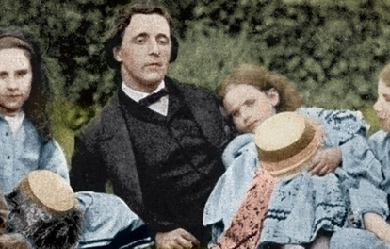
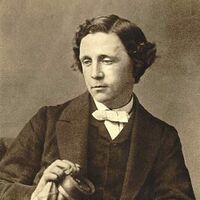
Charles Lutwidge Dodgson (27 January 1832 – 14 January 1898), better known by the pseudonym Lewis Carroll, was an English author, mathematician, logician, Anglican deacon and photographer. His most famous writings are Alice's Adventures in Wonderland and its sequel Through the Looking-Glass, as well as the poems "The Hunting of the Snark" and "Jabberwocky", all examples of the genre of literary nonsense. He is noted for his facility at word play, logic, and fantasy, and there are societies in many parts of the world (including the United Kingdom, Japan, the United States, and New Zealand) dedicated to the enjoyment and promotion of his works and the investigation of his life. Antecedents Dodgson's family was predominantly northern English, with Irish connections. Conservative and High Church Anglican, most of Dodgson's ancestors were army officers or Church of England clergy. His great-grandfather, also named Charles Dodgson, had risen through the ranks of the church to become the Bishop of Elphin. His grandfather, another Charles, had been an army captain, killed in action in Ireland in 1803 when his two sons were hardly more than babies. His mother's name was Frances Jane Lutwidge. The elder of these sons – yet another Charles Dodgson – was Carroll's father. He reverted to the other family tradition and took holy orders. He went to Westminster School, and then to Christ Church, Oxford. He was mathematically gifted and won a double first degree, which could have been the prelude to a brilliant academic career. Instead he married his first cousin in 1827 and became a country parson. Dodgson was born in the little parsonage of Daresbury in Cheshire near the towns of Warrington and Runcorn, the eldest boy but already the third child of the four-and-a-half-year-old marriage. Eight more children were to follow. When Charles was 11, his father was given the living of Croft-on-Tees in North Yorkshire, and the whole family moved to the spacious rectory. This remained their home for the next twenty-five years. Young Charles' father was an active and highly conservative cleric of the Church of England who later became the Archdeacon of Richmond and involved himself, sometimes influentially, in the intense religious disputes that were dividing the church. He was High Church, inclining to Anglo-Catholicism, an admirer of John Henry Newman and the Tractarian movement, and did his best to instill such views in his children. Young Charles was to develop an ambiguous relationship with his father's values and with the Church of England as a whole. Education Home life During his early youth, Dodgson was educated at home. His "reading lists" preserved in the family archives testify to a precocious intellect: at the age of seven the child was reading The Pilgrim's Progress. He also suffered from a stammer – a condition shared by most of his siblings – that often influenced his social life throughout his years. At age twelve he was sent to Richmond Grammar School (now part of Richmond School) at nearby Richmond. Rugby In 1846, young Dodgson moved on to Rugby School, where he was evidently less happy, for as he wrote some years after leaving the place: I cannot say ... that any earthly considerations would induce me to go through my three years again ... I can honestly say that if I could have been ... secure from annoyance at night, the hardships of the daily life would have been comparative trifles to bear. Scholastically, though, he excelled with apparent ease. "I have not had a more promising boy at his age since I came to Rugby", observed R.B. Mayor, then Mathematics master. Oxford He left Rugby at the end of 1849 and matriculated at Oxford in May 1850 as a member of his father's old college, Christ Church. After waiting for rooms in college to become available, he went into residence in January 1851. He had been at Oxford only two days when he received a summons home. His mother had died of "inflammation of the brain" – perhaps meningitis or a stroke – at the age of forty-seven. His early academic career veered between high promise and irresistible distraction. He did not always work hard, but was exceptionally gifted and achievement came easily to him. In 1852 he obtained first-class honours in Mathematics Moderations, and was shortly thereafter nominated to a Studentship by his father's old friend, Canon Edward Pusey. In 1854 he obtained first-class honours in the Final Honours School of Mathematics, graduating Bachelor of Arts. He remained at Christ Church studying and teaching, but the next year he failed an important scholarship through his self-confessed inability to apply himself to study. Even so, his talent as a mathematician won him the Christ Church Mathematical Lectureship in 1855, which he continued to hold for the next twenty-six years. Despite early unhappiness, Dodgson was to remain at Christ Church, in various capacities, until his death. Character and appearance Health challenges The young adult Charles Dodgson was about six feet tall, slender, and had curling brown hair and blue or grey eyes (depending on the account). He was described in later life as somewhat asymmetrical, and as carrying himself rather stiffly and awkwardly, though this may be on account of a knee injury sustained in middle age. As a very young child, he suffered a fever that left him deaf in one ear. At the age of seventeen, he suffered a severe attack of whooping cough, which was probably responsible for his chronically weak chest in later life. Another defect he carried into adulthood was what he referred to as his "hesitation", a stammer he acquired in early childhood and which plagued him throughout his life. The stammer has always been a potent part of the conceptions of Dodgson; it is part of the belief that he stammered only in adult company and was free and fluent with children, but there is no evidence to support this idea. Many children of his acquaintance remembered the stammer while many adults failed to notice it. Dodgson himself seems to have been far more acutely aware of it than most people he met; it is said he caricatured himself as the Dodo in Alice's Adventures in Wonderland, referring to his difficulty in pronouncing his last name, but this is one of the many "facts" often-repeated, for which no firsthand evidence remains. He did indeed refer to himself as the dodo, but that this was a reference to his stammer is simply speculation. Although Dodgson's stammer troubled him, it was never so debilitating that it prevented him from applying his other personal qualities to do well in society. At a time when people commonly devised their own amusements and when singing and recitation were required social skills, the young Dodgson was well-equipped to be an engaging entertainer. He reportedly could sing tolerably well and was not afraid to do so before an audience. He was adept at mimicry and storytelling, and was reputedly quite good at charades. Social connections In the interim between his early published writing and the success of the Alice books, Dodgson began to move in the Pre-Raphaelite social circle. He first met John Ruskin in 1857 and became friendly with him. He developed a close relationship with Dante Gabriel Rossetti and his family, and also knew William Holman Hunt, John Everett Millais, and Arthur Hughes, among other artists. He also knew the fairy-tale author George MacDonald well – it was the enthusiastic reception of Alice by the young MacDonald children that convinced him to submit the work for publication. Politics, religion and philosophy In broad terms, Dodgson has traditionally been regarded as politically, religiously, and personally conservative. Martin Gardner labels Dodgson as a Tory who was "awed by lords and inclined to be snobbish towards inferiors." The Revd W. Tuckwell, in his Reminiscences of Oxford (1900), regarded him as "austere, shy, precise, absorbed in mathematical reverie, watchfully tenacious of his dignity, stiffly conservative in political, theological, social theory, his life mapped out in squares like Alice's landscape." However, Dodgson also expressed interest in philosophies and religions that seem at odds with this assessment. For example, he was a founding member of the Society for Psychical Research. It has been argued by the proponents of the 'Carroll Myth' that these factors require a reconsideration of Gardner's diagnosis, and that perhaps, Dodgson's true outlook was more complex than previously believed (see 'the Carroll Myth' below). Dodgson wrote some studies of various philosophical arguments. In 1895, he developed a philosophical regressus-argument on deductive reasoning in his article "What the Tortoise Said to Achilles", which appeared in one of the early volumes of the philosophical journal Mind. The article was reprinted in the same journal a hundred years later, in 1995, with a subsequent article by Simon Blackburn titled Practical Tortoise Raising. Artistic activities Literature From a young age, Dodgson wrote poetry and short stories, both contributing heavily to the family magazine Mischmasch and later sending them to various magazines, enjoying moderate success. Between 1854 and 1856, his work appeared in the national publications, The Comic Times and The Train, as well as smaller magazines like the Whitby Gazette and the Oxford Critic. Most of this output was humorous, sometimes satirical, but his standards and ambitions were exacting. "I do not think I have yet written anything worthy of real publication (in which I do not include the Whitby Gazette or the Oxonian Advertiser), but I do not despair of doing so some day," he wrote in July 1855. Sometime after 1850, he did write puppet plays for his siblings' entertainment, of which one has survived, La Guida di Bragia. In 1856 he published his first piece of work under the name that would make him famous. A romantic poem called "Solitude" appeared in The Train under the authorship of "Lewis Carroll." This pseudonym was a play on his real name; Lewis was the anglicised form of Ludovicus, which was the Latin for Lutwidge, and Carroll an Irish surname similar to the Latin name Carolus, from which the name Charles comes. Alice In the same year, 1856, a new Dean, Henry Liddell, arrived at Christ Church, bringing with him his young family, all of whom would figure largely in Dodgson's life and, over the following years, greatly influence his writing career. Dodgson became close friends with Liddell's wife, Lorina, and their children, particularly the three sisters: Lorina, Edith and Alice Liddell. He was for many years widely assumed to have derived his own "Alice" from Alice Liddell. This was given some apparent substance by the fact the acrostic poem at the end of Through the Looking Glass spells out her name, and that there are many superficial references to her hidden in the text of both books. It has been pointed out that Dodgson himself repeatedly denied in later life that his "little heroine" was based on any real child, and frequently dedicated his works to girls of his acquaintance, adding their names in acrostic poems at the beginning of the text. Gertrude Chataway's name appears in this form at the beginning of The Hunting of the Snark, and no one has ever suggested this means any of the characters in the narrative are based on her. Though information is scarce (Dodgson's diaries for the years 1858–1862 are missing), it does seem clear that his friendship with the Liddell family was an important part of his life in the late 1850s, and he grew into the habit of taking the children (first the boy, Harry, and later the three girls) on rowing trips accompanied by an adult friend to nearby Nuneham Courtenay or Godstow. It was on one such expedition, on 4 July 1862, that Dodgson invented the outline of the story that eventually became his first and largest commercial success. Having told the story and been begged by Alice Liddell to write it down, Dodgson eventually (after much delay) presented her with a handwritten, illustrated manuscript entitled Alice's Adventures Under Ground in November 1864. Before this, the family of friend and mentor George MacDonald read Dodgson's incomplete manuscript, and the enthusiasm of the MacDonald children encouraged Dodgson to seek publication. In 1863, he had taken the unfinished manuscript to Macmillan the publisher, who liked it immediately. After the possible alternative titles Alice Among the Fairies and Alice's Golden Hour were rejected, the work was finally published as Alice's Adventures in Wonderland in 1865 under the Lewis Carroll pen-name, which Dodgson had first used some nine years earlier. The illustrations this time were by Sir John Tenniel; Dodgson evidently thought that a published book would need the skills of a professional artist. The overwhelming commercial success of the first Alice book changed Dodgson's life in many ways. The fame of his alter ego "Lewis Carroll" soon spread around the world. He was inundated with fan mail and with sometimes unwanted attention. Indeed, according to one popular story, Queen Victoria herself enjoyed Alice In Wonderland so much that she suggested he dedicate his next book to her, and was accordingly presented with his next work, a scholarly mathematical volume entitled An Elementary Treatise on Determinants. Dodgson himself vehemently denied this story, commenting "...It is utterly false in every particular: nothing even resembling it has occurred"; and it is unlikely for other reasons: as T.B. Strong comments in a Times article, "It would have been clean contrary to all his practice to identify [the] author of Alice with the author of his mathematical works". He also began earning quite substantial sums of money but continued with his seemingly disliked post at Christ Church. Late in 1871, a sequel – Through the Looking-Glass and What Alice Found There – was published. (The title page of the first edition erroneously gives "1872" as the date of publication.) Its somewhat darker mood possibly reflects the changes in Dodgson's life. His father had recently died (1868), plunging him into a depression that lasted some years. The Hunting of the Snark In 1876, Dodgson produced his last great work, The Hunting of the Snark, a fantastical "nonsense" poem, exploring the adventures of a bizarre crew of tradesmen, and one beaver, who set off to find the eponymous creature. The painter Dante Gabriel Rossetti reputedly became convinced the poem was about him. Photography In 1856, Dodgson took up the new art form of photography, first under the influence of his uncle Skeffington Lutwidge, and later his Oxford friend Reginald Southey. He soon excelled at the art and became a well-known gentleman-photographer, and he seems even to have toyed with the idea of making a living out of it in his very early years. A recent study by Roger Taylor and Edward Wakeling exhaustively lists every surviving print, and Taylor calculates that just over fifty percent of his surviving work depicts young girls, though this may be a highly distorted figure as approximately 60% of his original photographic portfolio is now missing, so any firm conclusions are difficult. Dodgson also made many studies of men, women, male children and landscapes; his subjects also include skeletons, dolls, dogs, statues and paintings, and trees. His pictures of children were taken with a parent in attendance and many of the pictures were taken in the Liddell garden, because natural sunlight was required for good exposures. He also found photography to be a useful entrée into higher social circles. During the most productive part of his career, he made portraits of notable sitters such as John Everett Millais, Ellen Terry, Dante Gabriel Rossetti, Julia Margaret Cameron, Michael Faraday and Alfred, Lord Tennyson. Dodgson abruptly ceased photography in 1880. Over 24 years, he had completely mastered the medium, set up his own studio on the roof of Tom Quad, and created around 3, images. Fewer than 1, have survived time and deliberate destruction. He reported that he stopped taking photographs because keeping his studio working was difficult (he used the wet collodion process) and commercial photographers (who started using the dry plate process in the 1870s) took pictures more quickly. With the advent of Modernism, tastes changed, and his photography was forgotten from around 1920 until the 1960s. Inventions To promote letter writing, Dodgson invented The Wonderland Postage-Stamp Case in 1889. This was a cloth-backed folder with twelve slots, two marked for inserting the then most commonly used penny stamp, and one each for the other current denominations to one shilling. The folder was then put into a slip case decorated with a picture of Alice on the front and the Cheshire Cat on the back. All could be conveniently carried in a pocket or purse. When issued it also included a copy of Carroll's pamphletted lecture, Eight or Nine Wise Words About Letter-Writing. Reconstructed nyctograph, with scale demonstrated by a 5 euro cent. Another invention is a writing tablet called the nyctograph for use at night that allowed for note-taking in the dark; thus eliminating the trouble of getting out of bed and striking a light when one wakes with an idea. The device consisted of a gridded card with sixteen squares and system of symbols representing an alphabet of Dodgson's design, using letter shapes similar to the Graffiti writing system on a Palm device. Among the games he devised outside of logic there are a number of word games, including an early version of what today is known as Scrabble. He also appears to have invented, or at least certainly popularised, the Word Ladder (or "doublet" as it was known at first); a form of brain-teaser that is still popular today: the game of changing one word into another by altering one letter at a time, each successive change always resulting in a genuine word. For instance, CAT is transformed into DOG by the following steps: CAT, COT, DOT, DOG. Other items include a rule for finding the day of the week for any date; a means for justifying right margins on a typewriter; a steering device for a velociam (a type of tricycle); new systems of parliamentary representation; more nearly fair elimination rules for tennis tournaments; a new sort of postal money order; rules for reckoning postage; rules for a win in betting; rules for dividing a number by various divisors; a cardboard scale for the college common room he worked in later in life, which, held next to a glass, ensured the right amount of liqueur for the price paid; a double-sided adhesive strip for things like the fastening of envelopes or mounting things in books; a device for helping a bedridden invalid to read from a book placed sideways; and at least two ciphers for cryptography. Mathematical work Within the academic discipline of mathematics, Dodgson worked primarily in the fields of geometry, matrix algebra, mathematical logic and recreational mathematics, producing nearly a dozen books under his real name. Dodgson also developed new ideas in the study of elections (e.g., Dodgson's method) and committees; some of this work was not published until well after his death. He worked as a mathematics tutor at Oxford, an occupation that gave him some financial security. Later years Over the remaining twenty years of his life, throughout his growing wealth and fame, his existence remained little changed. He continued to teach at Christ Church until 1881, and remained in residence there until his death. His last novel, the two-volume Sylvie and Bruno, was published in 1889 and 1893 respectively. It achieved nowhere near the success of the Alice books. Its intricacy was apparently not appreciated by contemporary readers. The reviews and its sales, only 13, copies, were disappointing. The only occasion on which (as far as is known) he travelled abroad was a trip to Russia in 1867 as an ecclesiastical together with the Reverend Henry Liddon. He recounts the travel in his "Russian Journal", which was first commercially published in 1935. On his way to Russia and back Lewis Carroll also saw different cities in Belgium, Germany, the partitioned Poland, and France. He died on 14 January 1898 at his sisters' home, "The Chestnuts" in Guildford, of pneumonia following influenza. He was two weeks away from turning 66 years old. He is buried in Guildford at the Mount Cemetery. Controversies and mysteries "Carroll Myth” Since 1999 a group of scholars, notably Karoline Leach, Hugues Lebailly and Sherry L. Ackerman, John Tufail, Douglas Nickel and others, argue that what Leach terms the "Carroll Myth" has wildly distorted biographical perception of his life and his work. Leach's book, In the Shadow of the Dreamchild, raised a considerable amount of controversy. In brief the claim is that: * In general terms Dodgson's life has been simplified and 'infantilised' by a combination of inaccurate biography and the longstanding unavailability of key evidence, which allowed legends to proliferate unchecked. * By the time the evidence did become available the 'mythic' image of the man had become so embedded in scholastic and popular thinking it remained unquestioned, despite the fact the evidence failed to support it. * If the evidence is examined dispassionately it shows many of the most famous legends about the man (e.g. his 'paedophilia', and his exclusive adoration of small girls) are untrue, or at least grossly simplified. In more detail, Lebailly has endeavoured to set Dodgson's child-photography within the "Victorian Child Cult", which perceived child-nudity as essentially an expression of innocence. Lebailly claims that studies of child nudes were mainstream and fashionable in Dodgson's time and that most photographers, including Oscar Gustave Rejlander and Julia Margaret Cameron, made them as a matter of course. Lebailly continues that child nudes even appeared on Victorian Christmas cards, implying a very different social and aesthetic assessment of such material. Lebailly concludes that it has been an error of Dodgson's biographers to view his child-photography with 20th or 21st century eyes, and to have presented it as some form of personal idiosyncrasy, when it was in fact a response to a prevalent aesthetic and philosophical movement of the time. Leach's reappraisal of Dodgson focused in particular on his controversial sexuality. She argues that the allegations of paedophilia rose initially from a misunderstanding of Victorian morals, as well as the mistaken idea, fostered by Dodgson's various biographers, that he had no interest in adult women. She termed the traditional image of Dodgson "the Carroll Myth". She drew attention to the large amounts of evidence in his diaries and letters that he was also keenly interested in adult women, married and single, and enjoyed several scandalous (by the social standards of his time) relationships with them. She also pointed to the fact that many of those he described as "child-friends" were girls in their late teens and even twenties. She argues that suggestions of paedophilia evolved only many years after his death, when his well-meaning family had suppressed all evidence of his relationships with women in an effort to preserve his reputation, thus giving a false impression of a man interested only in little girls. Similarly, Leach traces the claim that many of Carroll's female friendships ended when the girls reached the age of 14 to a 1932 biography by Langford Reed. The concept of the Carroll Myth has produced polarised reactions from Carroll scholars. In 2004 Contrariwise, the Association for new Lewis Carroll studies. was established, and those such as Carolyn Sigler and Cristopher Hollingsworth have joined the ranks of those calling for a major reassessment. But the concept of the Myth has been opposed by some leading Carroll scholars, in particular Morton N. Cohen and Martin Gardner (their comments, and those of more positive reviewers, can be found on Karoline Leach's own page). Biographer Jenny Woolf, while agreeing that Carroll's image has been comprehensively misrepresented in the past, believes that this can be attributed partly to Carroll's own behaviour and in particular his tendency to self-caricature in later life. Ordination Dodgson had been groomed for the ordained ministry in the Anglican Church from a very early age and was expected, as a condition of his residency at Christ Church, to take holy orders within four years of obtaining his master's degree. He delayed the process for some time but eventually took deacon's orders on 22 December 1861. But when the time came a year later to progress to priestly orders, Dodgson appealed to the dean for permission not to proceed. This was against college rules and initially Dean Liddell told him he would have to consult the college ruling body, which would almost undoubtedly have resulted in his being expelled. For unknown reasons, Dean Liddell changed his mind overnight and permitted Dodgson to remain at the college in defiance of the rules. Uniquely amongst senior students of his time Dodgson never became a priest. There is currently no conclusive evidence about why Dodgson rejected the priesthood. Some have suggested his stammer made him reluctant to take the step, because he was afraid of having to preach. Wilson quotes letters by Dodgson describing difficulty in reading lessons and prayers rather than preaching in his own words. But Dodgson did indeed preach in later life, even though not in priest's orders, so it seems unlikely his impediment was a major factor affecting his choice. Wilson also points out that the then Bishop of Oxford, Samuel Wilberforce, who ordained Dodgson, had strong views against clergy going to the theatre, one of Dodgson's great interests. Others have suggested that he was having serious doubts about Anglicanism. He was interested in minority forms of Christianity (he was an admirer of F.D. Maurice) and "alternative" religions (theosophy). Dodgson became deeply troubled by an unexplained sense of sin and guilt at this time (the early 1860s) and frequently expressed the view in his diaries that he was a "vile and worthless" sinner, unworthy of the priesthood, and this sense of sin and unworthiness may well have affected his decision to abandon being ordained to the priesthood. Missing diaries At least four complete volumes and around seven pages of text are missing from Dodgson's 13 diaries. The loss of the volumes remains unexplained; the pages have been deliberately removed by an unknown hand. Most scholars assume the diary material was removed by family members in the interests of preserving the family name, but this has not been proven. Except for one page, the period of his diaries from which material is missing is between 1853 and 1863 (when Dodgson was 21–31 years old). This was a period when Dodgson began suffering great mental and spiritual anguish and confessing to an overwhelming sense of his own sin. This was also the period of time when he composed his extensive love poetry, leading to speculation that the poems may have been autobiographical. Many theories have been put forward to explain the missing material. A popular explanation for one particular missing page (27 June 1863) is that it might have been torn out to conceal a proposal of marriage on that day by Dodgson to the 11-year-old Alice Liddell; there has never been any evidence to suggest this was so, and a paper discovered by Karoline Leach in the Dodgson family archive in 1996 offers some evidence to the contrary. This paper, known as the "cut pages in diary document", was compiled by various members of Carroll's family after his death. Part of it may have been written at the time the pages were destroyed, though this is unclear. The document offers a brief summary of two diary pages that are now missing, including the one for 27 June 1863. The summary for this page states that Mrs. Liddell told Dodgson there was gossip circulating about him and the Liddell family's governess, as well as about his relationship with "Ina", presumably Alice's older sister, Lorina Liddell. The "break" with the Liddell family that occurred soon after was presumably in response to this gossip. An alternative interpretation has been made regarding Carroll's rumoured involvement with "Ina": Lorina was also the name of Alice Liddell's mother. What is deemed most crucial and surprising is that the document seems to imply Dodgson's break with the family was not connected with Alice at all. Until a primary source is discovered, the events of 27 June 1863 remain inconclusive. Migraine and epilepsy In his diary for 1880, Dodgson recorded experiencing his first episode of migraine with aura, describing very accurately the process of 'moving fortifications' that are a manifestation of the aura stage of the syndrome. Unfortunately there is no clear evidence to show whether this was his first experience of migraine per se, or if he may have previously suffered the far more common form of migraine without aura, although the latter seems most likely, given the fact that migraine most commonly develops in the teens or early adulthood. Another form of migraine aura, Alice in Wonderland Syndrome, has been named after Dodgson's little heroine, because its manifestation can resemble the sudden size-changes in the book. Also known as micropsia and macropsia, it is a brain condition affecting the way objects are perceived by the mind. For example, an afflicted person may look at a larger object, like a basketball, and perceive it as if it were the size of a golf ball. Some authors have suggested that Dodgson may have suffered from this type of aura, and used it as an inspiration in his work, but there is no evidence that he did. Dodgson also suffered two attacks in which he lost consciousness. He was diagnosed by three different doctors; a Dr. Morshead, Dr. Brooks, and Dr. Stedman, believed the attack and a consequent attack to be an "epileptiform" seizure (initially thought to be fainting, but Brooks changed his mind). Some have concluded from this he was a lifetime sufferer of this condition, but there is no evidence of this in his diaries beyond the diagnosis of the two attacks already mentioned. Some authors, in particular Sadi Ranson, have suggested Carroll may have suffered from temporal lobe epilepsy in which consciousness is not always completely lost, but altered, and in which the symptoms mimic many of the same experiences as Alice in Wonderland. Carroll had at least one incidence in which he suffered full loss of consciousness and awoke with a bloody nose, which he recorded in his diary and noted that the episode left him not feeling himself for "quite sometime afterward". This attack was diagnosed as possibly "epileptiform" and Carroll himself later wrote of his "seizures" in the same diary. Most of the standard diagnostic tests of today were not available in the nineteenth century. Recently, Dr Yvonne Hart, consultant neurologist at the Radcliffe Hospital, Oxford, considered Dodgson's symptoms. Her conclusion, quoted in Jenny Woolf's The Mystery of Lewis Carroll, is that Dodgson very likely had migraine, and may have had epilepsy, but she emphasises that she would have considerable doubt about making a diagnosis of epilepsy without further information. Suggestions of paedophilia Stuart Dodgson Collingwood (Dodgson's nephew and biographer) wrote: And now as to the secondary causes which attracted him to children. First, I think children appealed to him because he was pre-eminently a teacher, and he saw in their unspoiled minds the best material for him to work upon. In later years one of his favourite recreations was to lecture at schools on logic; he used to give personal attention to each of his pupils, and one can well imagine with what eager anticipation the children would have looked forward to the visits of a schoolmaster who knew how to make even the dullest subjects interesting and amusing. Despite comments like this, Dodgson's friendships with young girls and psychological readings of his work – especially his photographs of nude or semi-nude girls – have all led to speculation that he was a paedophile. This possibility has underpinned numerous modern interpretations of his life and work, particularly Dennis Potter's play Alice and his screenplay for the motion picture, Dreamchild, Robert Wilson's Alice, and a number of recent biographies, including Michael Bakewell's Lewis Carroll: A Biography (1996), Donald Thomas's Lewis Carroll: A Portrait with Background (1995), and Morton N. Cohen's Lewis Carroll: A Biography (1995). All of these works more or less unequivocally assume that Dodgson was a paedophile, albeit a repressed and celibate one. Cohen claims Dodgson's "sexual energies sought unconventional outlets", and further writes: We cannot know to what extent sexual urges lay behind Charles's preference for drawing and photographing children in the nude. He contended the preference was entirely aesthetic. But given his emotional attachment to children as well as his aesthetic appreciation of their forms, his assertion that his interest was strictly artistic is naïve. He probably felt more than he dared acknowledge, even to himself. Cohen notes that Dodgson "apparently convinced many of his friends that his attachment to the nude female child form was free of any eroticism", but adds that "later generations look beneath the surface" (p. 229). Cohen and other biographers argue that Dodgson may have wanted to marry the 11-year-old Alice Liddell, and that this was the cause of the unexplained "break" with the family in June 1863. There has never been significant evidence to support the idea, however, and the 1996 discovery of the "cut pages in diary document" (see above) seems to make it highly probable that the 1863 "break" had nothing to do with Alice, but was perhaps connected with rumours involving her older sister Lorina (born 11 May 1849, so she would have been 14 at the time), her governess, or her mother who was also nicknamed "Ina". Some writers, e.g., Derek Hudson and Roger Lancelyn Green, stop short of identifying Dodgson as a paedophile, but concur that he had a passion for small female children and next to no interest in the adult world. The basis for Dodgson's interest in female children has been challenged in the last ten years by several writers and scholars (see the 'Carroll Myth' above). Literary works * La Guida di Bragia, a Ballad Opera for the Marionette Theatre (around 1850) * A Tangled Tale * Alice's Adventures in Wonderland (1865) * Facts * Rhyme? And Reason? (also published as Phantasmagoria) * Pillow Problems * Sylvie and Bruno * Sylvie and Bruno Concluded * The Hunting of the Snark (1876) * Three Sunsets and Other Poems * Through the Looking-Glass, and What Alice Found There (includes "Jabberwocky" and "The Walrus and the Carpenter") (1871) * What the Tortoise Said to Achilles Mathematical works * A Syllabus of Plane Algebraic Geometry (1860) * The Fifth Book of Euclid Treated Algebraically (1858 and 1868) * An Elementary Treatise on Determinants, With Their Application to Simultaneous Linear Equations and Algebraic Equations * Euclid and his Modern Rivals (1879), both literary and mathematical in style * Symbolic Logic Part I * Symbolic Logic Part II (published posthumously) * The Alphabet Cipher (1868) * The Game of Logic * Some Popular Fallacies about Vivisection * Curiosa Mathematica I (1888) * Curiosa Mathematica II (1892) * The Theory of Committees and Elections, collected, edited, analysed, and published in 1958, by Duncan Black References Wikipedia - http://en.wikipedia.org/wiki/Lewis_Carroll
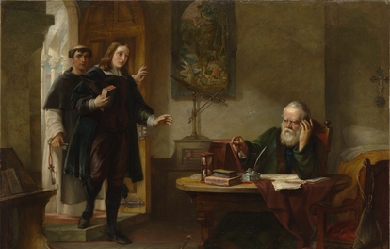
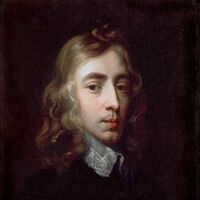
John Milton (9 December 1608 – 8 November 1674) was an English poet, polemicist, a scholarly man of letters, and a civil servant for the Commonwealth (republic) of England under Oliver Cromwell. He wrote at a time of religious flux and political upheaval, and is best known for his epic poem Paradise Lost. Milton's poetry and prose reflect deep personal convictions, a passion for freedom and self determination, and the urgent issues and political turbulence of his day. Writing in English, Latin, and Italian, he achieved international renown within his lifetime, and his celebrated Areopagitica, (written in condemnation of pre-publication censorship) is among history’s most influential and impassioned defenses of free speech and freedom of the press.
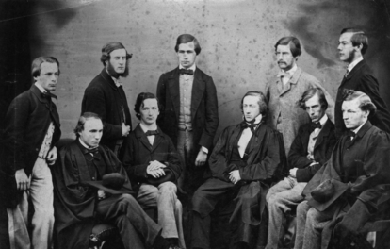
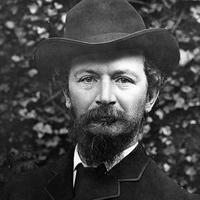
Algernon Charles Swinburne (5 April 1837– 10 April 1909) was an English poet, playwright, novelist, and critic. He wrote several novels and collections of poetry such as Poems and Ballads, and contributed to the famous Eleventh Edition of the Encyclopædia Britannica. A controversial figure at the time, Swinburne was a sado-masochist and alcoholic and was obsessed with the Middle Ages and lesbianism. Swinburne wrote about many taboo topics, such as lesbianism, cannibalism, sado-masochism, and anti-theism. His poems have many common motifs, such as the Ocean, Time, and Death. Several historical people are featured in his poems, such as Sappho ("Sapphics"), Anactoria ("Anactoria"), Jesus ("Hymn to Proserpine": Galilaee, La. “Galilean”) and Catullus ("To Catullus").
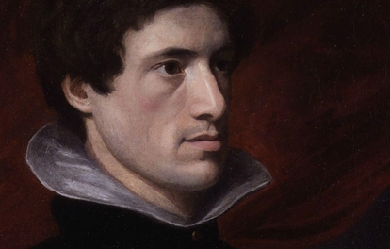
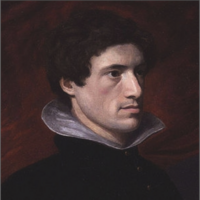
Charles Lamb (London, 10 February 1775 – Edmonton, 27 December 1834) was an English essayist, best known for his Essays of Elia and for the children's book Tales from Shakespeare, which he produced with his sister, Mary Lamb (1764–1847). Lamb has been referred to by E.V. Lucas, his principal biographer, as "the most lovable figure in English literature”. Youth and schooling Lamb was the son of Elizabeth Field and John Lamb. Lamb was the youngest child, with an 11 year older sister Mary, an even older brother John, and 4 other siblings who did not survive their infancy. John Lamb (father), who was a lawyer's clerk, spent most of his professional life as the assistant and servant to a barrister by the name of Samuel Salt who lived in the Inner Temple in London. It was there in the Inner Temple in Crown Office Row, that Charles Lamb was born and spent his youth. Lamb created a portrait of his father in his "Elia on the Old Benchers" under the name Lovel. Lamb's older brother was too much his senior to be a youthful companion to the boy but his sister Mary, being born eleven years before him, was probably his closest playmate. Lamb was also cared for by his paternal aunt Hetty, who seems to have had a particular fondness for him. A number of writings by both Charles and Mary suggest that the conflict between Aunt Hetty and her sister-in-law created a certain degree of tension in the Lamb household. However, Charles speaks fondly of her and her presence in the house seems to have brought a great deal of comfort to him. Some of Lamb's fondest childhood memories were of time spent with Mrs. Field, his maternal grandmother, who was for many years a servant to the Plummer family, who owned a large country house called Blakesware, near Widford, Hertfordshire. After the death of Mrs. Plummer, Lamb's grandmother was in sole charge of the large home and, as Mr. Plummer was often absent, Charles had free rein of the place during his visits. A picture of these visits can be glimpsed in the Elia essay Blakesmoor in H—shire. "Why, every plank and panel of that house for me had magic in it. The tapestried [sic] bed-rooms – tapestry so much better than painting – not adorning merely, but peopling the wainscots – at which childhood ever and anon would steal a look, shifting its coverlid (replaced as quickly) to exercise its tender courage in a momentary eye-encounter with those stern bright visages, staring reciprocally – all Ovid on the walls, in colours vivider than his descriptions.” Little is known about Charles's life before the age of seven. We know that Mary taught him to read at a very early age and he read voraciously. It is believed that he suffered from smallpox during his early years which forced him into a long period of convalescence. After this period of recovery Lamb began to take lessons from Mrs. Reynolds, a woman who lived in the Temple and is believed to have been the former wife of a lawyer. Mrs. Reynolds must have been a sympathetic schoolmistress because Lamb maintained a relationship with her throughout his life and she is known to have attended dinner parties held by Mary and Charles in the 1820s. E.V. Lucas suggests that sometime in 1781 Charles left Mrs. Reynolds and began to study at the Academy of William Bird. His time with William Bird did not last long, however, because by October 1782 Lamb was enrolled in Christ's Hospital, a charity boarding school chartered by King Edward VI in 1552. Christ's Hospital was a traditional English boarding school; bleak and full of violence. The headmaster, Mr. Boyer, has become famous for his teaching in Latin and Greek, but also for his brutality. A thorough record of Christ's Hospital in Several essays by Lamb as well as the Autobiography of Leigh Hunt and the Biographia Literaria of Samuel Taylor Coleridge, with whom Charles developed a friendship that would last for their entire lives. Despite the brutality Lamb got along well at Christ's Hospital, due in part, perhaps, to the fact that his home was not far distant thus enabling him, unlike many other boys, to return often to the safety of home. Years later, in his essay "Christ’s Hospital Five and Thirty Years Ago," Lamb described these events, speaking of himself in the third person as "L.” “I remember L. at school; and can well recollect that he had some peculiar advantages, which I and other of his schoolfellows had not. His friends lived in town, and were near at hand; and he had the privilege of going to see them, almost as often as he wished, through some invidious distinction, which was denied to us.” Christ's Hospital was a typical English boarding school and many students later wrote of the terrible violence they suffered there. The upper master of the school from 1778 to 1799 was Reverend James Boyer, a man renowned for his unpredictable and capricious temper. In one famous story Boyer was said to have knocked one of Leigh Hunt's teeth out by throwing a copy of Homer at him from across the room. Lamb seemed to have escaped much of this brutality, in part because of his amiable personality and in part because Samuel Salt, his father's employer and Lamb's sponsor at the school was one of the institute's Governors. Charles Lamb suffered from a stutter and this "an inconquerable impediment" in his speech deprived him of Grecian status at Christ's Hospital and thus disqualifying him for a clerical career. While Coleridge and other scholarly boys were able to go on to Cambridge, Lamb left school at fourteen and was forced to find a more prosaic career. For a short time he worked in the office of Joseph Paice, a London merchant and then, for 23 weeks, until 8 February 1792, held a small post in the Examiner's Office of the South Sea House. Its subsequent downfall in a pyramid scheme after Lamb left would be contrasted to the company's prosperity in the first Elia essay. On 5 April 1792 he went to work in the Accountant's Office for British East India Company, the death of his father's employer having ruined the family's fortunes.Charles would continue to work there for 25 years, until his retirement with pension. In 1792 while tending to his grandmother, Mary Field, in Hertfordshire, Charles Lamb fell in love with a young woman named Ann Simmons. Although no epistolary record exists of the relationship between the two, Lamb seems to have spent years wooing Miss Simmons. The record of the love exists in several accounts of Lamb's writing. Rosamund Gray is a story of a young man named Allen Clare who loves Rosamund Gray but their relationship comes to nothing because of the sudden death of Miss Gray. Miss Simmons also appears in several Elia essays under the name "Alice M." The essays "Dream Children," "New Year's Eve," and several others, speak of the many years that Lamb spent pursuing his love that ultimately failed. Miss Simmons eventually went on to marry a silversmith by the name of Bartram and Lamb called the failure of the affair his 'great disappointment. Family tragedy Charles and his sister Mary both suffered periods of mental illness. Charles spent six weeks in a psychiatric hospital during 1795. He was, however, already making his name as a poet. On 22 September 1796, a terrible event occurred: Mary, "worn down to a state of extreme nervous misery by attention to needlework by day and to her mother at night," was seized with acute mania and stabbed her mother to the heart with a table knife. Although there was no legal status of 'insanity' at the time, a jury returned a verdict of 'Lunacy' and therefore freed her from guilt of willful murder. With the help of friends Lamb succeeded in obtaining his sister's release from what would otherwise have been lifelong imprisonment, on the condition that he take personal responsibility for her safekeeping. Lamb used a large part of his relatively meagre income to keep his beloved sister in a private 'madhouse' in Islington called Fisher House. The 1799 death of John Lamb was something of a relief to Charles because his father had been mentally incapacitated for a number of years since suffering a stroke. The death of his father also meant that Mary could come to live again with him in Pentonville, and in 1800 they set up a shared home at Mitre Court Buildings in the Temple, where they lived until 1809. Despite Lamb's bouts of melancholia and alcoholism, both he and his sister enjoyed an active and rich social life. Their London quarters became a kind of weekly salon for many of the most outstanding theatrical and literary figures of the day. Charles Lamb, having been to school with Samuel Coleridge, counted Coleridge as perhaps his closest, and certainly his oldest, friend. On his deathbed, Coleridge had a mourning ring sent to Lamb and his sister. Fortuitously, Lamb's first publication was in 1796, when four sonnets by "Mr. Charles Lamb of the India House" appeared in Coleridge's Poems on Various Subjects. In 1797 he contributed additional blank verse to the second edition, and met the Wordsworths, William and Dorothy, on his short summer holiday with Coleridge at Nether Stowey, thereby also striking up a lifelong friendship with William. In London, Lamb became familiar with a group of young writers who favoured political reform, including Percy Bysshe Shelley, William Hazlitt, and Leigh Hunt. Lamb continued to clerk for the East India Company and doubled as a writer in various genres, his tragedy, John Woodvil, being published in 1802. His farce, Mr H, was performed at Drury Lane in 1807, where it was roundly booed. In the same year, Tales from Shakespeare (Charles handled the tragedies; his sister Mary, the comedies) was published, and became a best seller for William Godwin's "Children's Library." In 1819, at age 44, Lamb, who, because of family commitments, had never married, fell in love with an actress, Fanny Kelly, of Covent Garden, and proposed marriage. She refused him, and he died a bachelor. His collected essays, under the title Essays of Elia, were published in 1823 ("Elia" being the pen name Lamb used as a contributor to the London Magazine). A further collection was published ten years or so later, shortly before Lamb's death. He died of a streptococcal infection, erysipelas, contracted from a minor graze on his face sustained after slipping in the street, on 27 December 1834, just a few months after Coleridge. He was 59. From 1833 till their deaths Charles and Mary lived at Bay Cottage, Church Street, Edmonton north of London (now part of the London Borough of Enfield. Lamb is buried in All Saints' Churchyard, Edmonton. His sister, who was ten years his senior, survived him for more than a dozen years. She is buried beside him. Work Lamb's first publication was the inclusion of four sonnets in the Coleridge's Poems on Various Subjects published in 1796 by Joseph Cottle. The sonnets were significantly influenced by the poems of Burns and the sonnets of William Bowles, a largely forgotten poet of the late 18th century. His poems garnered little attention and are seldom read today. Lamb's contributions to the second edition of the Poems showed significant growth as a poet. These poems included The Tomb of Douglas and A Vision of Repentance. Because of a temporary fall-out with Coleridge, Lamb's poems were to be excluded in the third edition of the Poems. As it turned out, a third edition never emerged and instead Coleridge's next publication was the monumentally influential Lyrical Ballads co-published with Wordsworth. Lamb, on the other hand, published a book entitled Blank Verse with Charles Lloyd, the mentally unstable son of the founder of Lloyd's Bank. Lamb's most famous poem was written at this time entitled The Old Familiar Faces. Like most of Lamb's poems it is particularly sentimental but it is still remembered and widely read, often included in Poetic Collections. Of particular interest to Lambarians is the opening verse of the original version of The Old Familiar Faces which is concerned with Lamb's mother. It was a verse that Lamb chose to remove from the edition of his Collected Work published in 1818. I had a mother, but she died, and left me, Died prematurely in a day of horrors - All, all are gone, the old familiar faces. From a fairly young age Lamb desired to be a poet but never gained the success that he had hoped. Lamb lived under the poetic shadow of his friend Coleridge. In the final years of the 18th century Lamb began to work on prose with the novella entitled Rosamund Gray, a story of a young girl who was thought to be inspired by Ann Simmonds, with whom Charles Lamb was thought to be in love. Although the story is not particularly successful as a narrative because of Lamb's poor sense of plot, it was well thought of by Lamb's contemporaries and led Shelley to observe “what a lovely thing is Rosamund Gray! How much knowledge of the sweetest part of our nature in it!" (Quoted in Barnett, page 50) n the first years of the 19th century Lamb began his fruitful literary cooperation with his sister Mary. Together they wrote at least three books for William Godwin’s Juvenile Library. The most successful of these was of course Tales From Shakespeare which ran through two editions for Godwin and has now been published dozens of times in countless editions, many of them illustrated. Lamb also contributed a footnote to Shakespearean studies at this time with his essay "On the Tragedies of Shakespeare," in which he argues that Shakespeare should be read rather than performed in order to gain the proper effect of his dramatic genius. Beside contributing to Shakespeare studies with his book Tales From Shakespeare, Lamb also contributed to the popularization of Shakespeare's contemporaries with his book Specimens of the English Dramatic Poets Who Lived About the Time of Shakespeare. Although he did not write his first Elia essay until 1820, Lamb’s gradual perfection of the essay form for which he eventually became famous began as early 1802 in a series of open letters to Leigh Hunt’s Reflector. The most famous of these is called "The Londoner" in which Lamb famously derides the contemporary fascination with nature and the countryside. Legacy Anne Fadiman notes regretfully that Lamb is not widely read in modern times: "I do not understand why so few other readers are clamoring for his company... [he] is kept alive largely through the tenuous resuscitations of university English departments." Lamb was honoured by The Latymer School, a grammar school in Edmonton, a suburb of London where he lived for a time; it has six houses, one of which, "Lamb", is named after Charles. Selected works * Blank Verse, poetry, 1798 * A Tale of Rosamund Gray, and old blind Margaret, 1798 * John Woodvil, poetic drama, 1802 * Tales from Shakespeare, 1807 * The Adventures of Ulysses, 1808 * Specimens of English Dramatic poets who lived about the time of Shakespeare, 1808 * On the Tragedies of Shakespeare, 1811 * Witches and Other Night Fears, 1821 * The Pawnbroker's Daughter, 1825 * Eliana, 1867 * Essays of Elia, 1823 * The Last Essays of Elia, 1833 References Wikipedia – http://en.wikipedia.org/wiki/Charles_Lamb
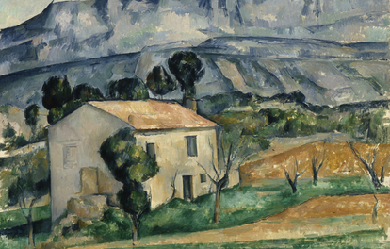
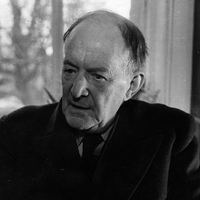
Walter John de la Mare (25 April 1873– 22 June 1956) was an English poet, short story writer and novelist. He is probably best remembered for his works for children, for his poem “The Listeners”, and for subtle psychological horror stories, amongst them “Seaton’s Aunt” and “Out of the Deep”. His 1921 novel Memoirs of a Midget won the James Tait Black Memorial Prize for fiction, and his post-war Collected Stories for Children won the 1947 Carnegie Medal for British children’s books.
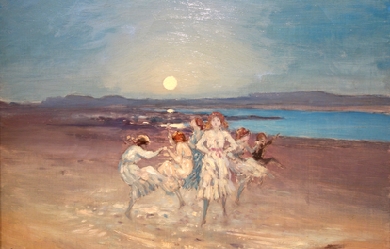
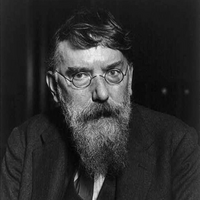
George William Russell (10 April 1867– 17 July 1935) who wrote with the pseudonym Æ (sometimes written AE or A.E.), was an Irish writer, editor, critic, poet, artistic painter and Irish nationalist. He was also a writer on mysticism, and a central personage in the group of devotees of theosophy which met in Dublin for many years.
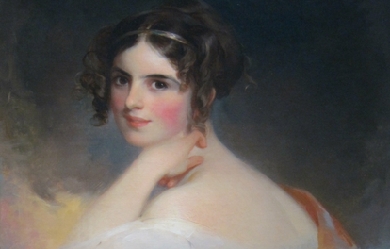
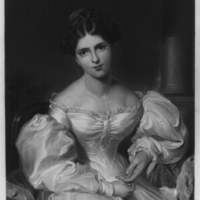
Frances Anne “Fanny” Kemble (27 November 1809– 15 January 1893) was a notable British actress from a theatre family in the early and mid-19th century. She was a well-known and popular writer, whose published works included plays, poetry, eleven volumes of memoirs, travel writing and works about the theatre.

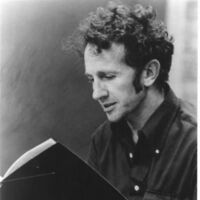
Philip Levine (January 10, 1928– February 14, 2015) was a Pulitzer Prize-winning American poet best known for his poems about working-class Detroit. He taught for more than thirty years in the English department of California State University, Fresno and held teaching positions at other universities as well. He served on the Board of Chancellors of the Academy of American Poets from 2000 to 2006, and was appointed Poet Laureate of the United States for 2011–2012. Biography Philip Levine grew up in industrial Detroit, the second of three sons and the first of identical twins of Jewish immigrant parents. His father, Harry Levine, owned a used auto parts business, his mother, Esther Priscol (Prisckulnick) Levine, was a bookseller. When Levine was five years old, his father died. While growing up, he faced the anti-Semitism embodied by Father Coughlin, the pro-Nazi radio priest. Levine started to work in car manufacturing plants at the age of 14. Detroit Central High School graduated him in 1946 and he went to college at Wayne University (now Wayne State University) in Detroit, where he began to write poetry, encouraged by his mother, to whom he dedicated the book of poems, The Mercy. Levine earned his A.B. in 1950 and went to work for Chevrolet and Cadillac in what he called “stupid jobs.” He married his first wife, Patty Kanterman, in 1951. The marriage lasted until 1953. In 1953, he attended the University of Iowa without registering, studying with, among others, poets Robert Lowell and John Berryman, the latter of whom Levine called his “one great mentor.” In 1954, he earned a mail-order masters degree with a thesis on John Keats’ “Ode to Indolence,” and married actress Frances J. Artley. He returned to the University of Iowa teaching technical writing, completing his Master of Fine Arts degree in 1957. The same year, he was awarded the Jones Fellowship in Poetry at Stanford University. In 1958, he joined the English department at California State University in Fresno, where he taught until his retirement in 1992. He also taught at many other universities, among them New York University as Distinguished Writer-in-Residence, Columbia, Princeton, Brown, Tufts, and the University of California at Berkeley. Levine and his wife had made their homes in Fresno and Brooklyn. He died of pancreatic cancer on February 14, 2015, age 87. Work The familial, social, and economic world of twentieth-century Detroit is one of the major subjects of Levine’s life work. His portraits of working class Americans and his continuous examination of his Jewish immigrant inheritance (both based on real life and described through fictional characters) has left a testimony of mid-twentieth century American life. Levine’s working experience lent his poetry a profound skepticism with regard to conventional American ideals. In his first two books, On the Edge (1963) and Not This Pig (1968), the poetry dwells on those who suddenly become aware that they are trapped in some murderous processes not of their own making. In 1968, Levine signed the “Writers and Editors War Tax Protest” pledge, vowing to refuse to make tax payments in protest against the Vietnam War. In his first two books, Levine was somewhat traditional in form and relatively constrained in expression. Beginning with They Feed They Lion, typically Levine’s poems are free-verse monologues tending toward trimeter or tetrameter. The music of Levine’s poetry depends on tension between his line-breaks and his syntax. The title poem of Levine’s book 1933 (1974) is an example of the cascade of clauses and phrases one finds in his poetry. Other collections include The Names of the Lost, A Walk with Tom Jefferson, New Selected Poems, and the National Book Award-winning What Work Is. On November 29, 2007 a tribute was held in New York City in anticipation of Levine’s eightieth birthday. Among those celebrating Levine’s career by reading Levine’s work were Yusef Komunyakaa, Galway Kinnell, E. L. Doctorow, Charles Wright, Jean Valentine and Sharon Olds. Levine read several new poems as well. Awards * 2013 Academy of American Poets Wallace Stevens Award * 2011 Appointed Poet Laureate Consultant in Poetry to the Library of Congress (United States Poet Laureate) * 1995 Pulitzer Prize for Poetry– The Simple Truth (1994) * 1991 National Book Award for Poetry and Los Angeles Times Book Prize– What Work Is * 1987 Ruth Lilly Poetry Prize from the Modern Poetry Association and the American Council for the Arts * 1981 Levinson Prize from Poetry magazine * 1980 Guggenheim Foundation fellowship * 1980 National Book Award for Poetry– Ashes: Poems New and Old * 1979 National Book Critics Circle Award– Ashes: Poems New and Old– 7 Years from Somewhere * 1978 Harriet Monroe Memorial Prize from Poetry * 1977 Lenore Marshall Poetry Prize from the Academy of American Poets– The Names of the Lost (1975) * 1973 American Academy of Arts and Letters Award, Frank O’Hara Prize, Guggenheim Foundation fellowship Published works Poetry collections * News of the World, Random House, Inc., 2009, ISBN 978-0-307-27223-2 * Stranger to Nothing: Selected Poems, Bloodaxe Books, UK, 2006, ISBN 978-1-85224-737-9 * Breath Knopf, 2004, ISBN 978-1-4000-4291-3; reprint, Random House, Inc., 2006, ISBN 978-0-375-71078-0 * The Mercy, Random House, Inc., 1999, ISBN 978-0-375-70135-1 * Unselected Poems, Greenhouse Review Press, 1997, ISBN 978-0-9655239-0-5 * The Simple Truth, Alfred A. Knopf, 1994, ISBN 978-0-679-43580-8; Alfred A. Knopf, 1996, ISBN 978-0-679-76584-4 * What Work Is, Knopf, 1992, ISBN 978-0-679-74058-2 * New Selected Poems, Knopf, 1991, ISBN 978-0-679-40165-0 * A Walk With Tom Jefferson, A.A. Knopf, 1988, ISBN 978-0-394-57038-9 * Sweet Will, Atheneum, 1985, ISBN 978-0-689-11585-1 * Selected Poems, Atheneum, 1984, ISBN 978-0-689-11456-4 * One for the Rose, Atheneum, 1981, ISBN 978-0-689-11223-2 * 7 Years From Somewhere, Atheneum, 1979, ISBN 978-0-689-10974-4 * Ashes: Poems New and Old, Atheneum, 1979, ISBN 978-0-689-10975-1 * The Names of the Lost, Atheneum, 1976 * 1933, Atheneum, 1974, ISBN 978-0-689-10586-9 * They Feed They Lion, Atheneum, 1972 * Red Dust (1971) * Pili’s Wall, Unicorn Press, 1971; Unicorn Press, 1980 * Not This Pig, Wesleyan University Press, 1968, ISBN 978-0-8195-2038-8; Wesleyan University Press, 1982, ISBN 978-0-8195-1038-9 * On the Edge (1963) Essays * The Bread of Time (1994) Translations * Off the Map: Selected Poems of Gloria Fuertes, edited and translated with Ada Long (1984) * Tarumba: The Selected Poems of Jaime Sabines, edited and translated with Ernesto Trejo (1979) Interviews * Don’t Ask, University of Michigan Press, 1981, ISBN 978-0-472-06327-7 * Moyers & Company, on December 29, 2013, Philip Levine reads some of his poetry and explores how his years working on Detroit’s assembly lines inspired his poetry. * “Interlochen Center for the Arts”, Interview with Interlochen Arts Academy students on March 17, 1977. References Wikipedia—https://en.wikipedia.org/wiki/Philip_Levine_(poet)
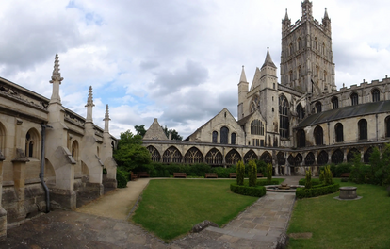
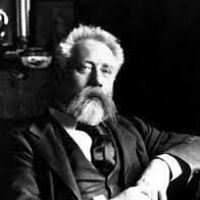
William Ernest Henley (23 August 1849 – 11 July 1903) was an English poet, critic and editor, best remembered for his 1875 poem “Invictus”. Henley was born in Gloucester and was the oldest of a family of six children, five sons and a daughter. His father, William, a bookseller and stationer, died in 1868 and was survived by young children and creditors. His mother, Mary Morgan, was descended from the poet and critic Joseph Wharton. Between 1861 and 1867, Henley was a pupil at the Crypt Grammar School (founded 1539).
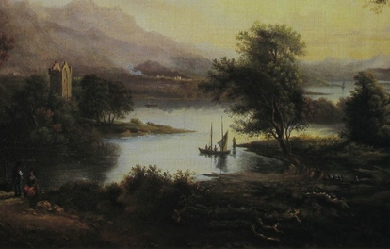
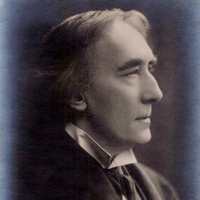
William Topaz McGonagall (March 1825 – 29 September 1902) was a Scottish weaver, doggerel poet and actor. He won notoriety as an extremely bad poet who exhibited no recognition of, or concern for, his peers' opinions of his work. He wrote about 200 poems, including his notorious "The Tay Bridge Disaster" and "The Famous Tay Whale", which are widely regarded as some of the worst in English literature. Groups throughout Scotland engaged him to make recitations from his work and contemporary descriptions of these performances indicate that many listeners were appreciating McGonagall's skill as a comic music hall character. Collections of his verse remain popular, with several volumes available today. McGonagall has been acclaimed as the worst poet in British history. The chief criticisms are that he is deaf to poetic metaphor and unable to scan correctly. McGonagall's fame stems from the humorous effects these shortcomings generate in his work. The inappropriate rhythms, weak vocabulary, and ill-advised imagery combine to make his work amongst the most unintentionally amusing dramatic poetry in the English language. His work is in a long tradition of narrative ballads and verse written and published about great events and tragedies, and widely circulated among the local population as handbills. In an age before radio and television, their voice was one way of communicating important news to an avid public. References Wikipedia—https://en.wikipedia.org/wiki/William_McGonagall
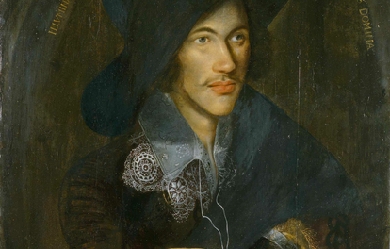

John Donne (between 24 January and 19 June 1572 – 31 March 1631) was an English poet, satirist, lawyer and priest. He is considered the pre-eminent representative of the metaphysical poets. His works are noted for their strong, sensual style and include sonnets, love poetry, religious poems, Latin translations, epigrams, elegies, songs, satires and sermons. His poetry is noted for its vibrancy of language and inventiveness of metaphor, especially compared to that of his contemporaries. Donne's style is characterised by abrupt openings and various paradoxes, ironies and dislocations. These features, along with his frequent dramatic or everyday speech rhythms, his tense syntax and his tough eloquence, were both a reaction against the smoothness of conventional Elizabethan poetry and an adaptation into English of European baroque and mannerist techniques. His early career was marked by poetry that bore immense knowledge of British society and he met that knowledge with sharp criticism. Another important theme in Donne’s poetry is the idea of true religion, something that he spent much time considering and theorising about. He wrote secular poems as well as erotic and love poems. He is particularly famous for his mastery of metaphysical conceits.
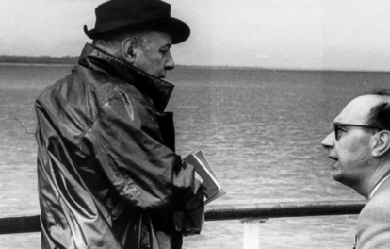
Sir John Betjeman, CBE (28 August 1906 – 19 May 1984) was an English poet, writer, and broadcaster who described himself in Who’s Who as a “poet and hack”. He was Poet Laureate of the United Kingdom from 1972 until his death. He was a founding member of the Victorian Society and a passionate defender of Victorian architecture. He began his career as a journalist and ended it as one of the most popular British Poets Laureate and a much-loved figure on British television. Life Early life and education Betjeman was born “John Betjemann”. His parents, Mabel (née Dawson) and Ernest Betjemann, had a family firm at 34–42 Pentonville Road which manufactured the kind of ornamental household furniture and gadgets distinctive to Victorians. The family name was changed to the less German-looking “Betjeman” during the First World War. His father’s forebears had actually come from the present day Netherlands and had, ironically, added the extra –n during the Fourth Anglo-Dutch War to avoid the anti-Dutch sentiment existing at the time, more than a century earlier, setting up their home and business in Islington, London. Betjeman was baptised at St Anne’s Church, Highgate Rise, a 19th-century church at the foot of Highgate West Hill. The family lived at Parliament Hill Mansions in the Lissenden Gardens private estate in Gospel Oak in north London. In 1909, the Betjemanns moved half a mile north to more opulent Highgate. From West Hill they lived in the reflected glory of the Burdett-Coutts estate: “Here from my eyrie, as the sun went down, I heard the old North London puff and shunt, Glad that I did not live in Gospel Oak.” Betjeman’s early schooling was at the local Byron House and Highgate School, where he was taught by poet T. S. Eliot. After this, he boarded at the Dragon School preparatory school in North Oxford and Marlborough College, a public school in Wiltshire. In his penultimate year, he joined the secret Society of Amici in which he was a contemporary of both Louis MacNeice and Graham Shepard. He founded The Heretick, a satirical magazine that lampooned Marlborough’s obsession with sport. While at school, his exposure to the works of Arthur Machen won him over to High Church Anglicanism, a conversion of importance to his later writing and conception of the arts. Magdalen College, Oxford Betjeman entered the University of Oxford with difficulty, having failed the mathematics portion of the university’s matriculation exam, Responsions. He was, however, admitted as a commoner (i.e. a non-scholarship student) at Magdalen College and entered the newly created School of English Language and Literature. At Oxford, Betjeman made little use of the academic opportunities. His tutor, a young C. S. Lewis, regarded him as an “idle prig” and Betjeman in turn considered Lewis unfriendly, demanding, and uninspired as a teacher. Betjeman particularly disliked the coursework’s emphasis on linguistics, and dedicated most of his time to cultivating his social life and his interest in English ecclesiastical architecture, and to private literary pursuits. At Oxford he was a friend of Maurice Bowra, later (1938 to 1970) to be Warden of Wadham. Betjeman had a poem published in Isis, the university magazine, and served as editor of the Cherwell student newspaper during 1927. His first book of poems was privately printed with the help of fellow student Edward James. He famously brought his teddy bear Archibald Ormsby-Gore up to Magdalen with him, the memory of which inspired his Oxford contemporary Evelyn Waugh to include Sebastian Flyte’s teddy Aloysius in Brideshead Revisited. Much of this period of his life is recorded in his blank verse autobiography Summoned by Bells published in 1960 and made into a television film in 1976. It is a common misapprehension, cultivated by Betjeman himself, that he did not complete his degree because he failed to pass the compulsory holy scripture examination, known colloquially as “Divvers”, short for “Divinity”. In Hilary term 1928, Betjeman failed Divinity for the second time. He had to leave the university for the Trinity term to prepare for a retake of the exam; he was then allowed to return in October. Betjeman then wrote to the Secretary of the Tutorial Board at Magdalen, G. C. Lee, asking to be entered for the Pass School, a set of examinations taken on rare occasions by undergraduates who are deemed unlikely to achieve an honours degree. In Summoned by Bells Betjeman claims that his tutor, C. S. Lewis, said “You’d have only got a third”– but he had informed the tutorial board that he thought Betjeman would not achieve an honours degree of any class. Permission to sit the Pass School was granted. Betjeman famously decided to offer a paper in Welsh. Osbert Lancaster tells the story that a tutor came by train twice a week (first class) from Aberystwyth to teach Betjeman. However, Jesus College had a number of Welsh tutors who more probably would have taught him. Betjeman finally had to leave at the end of the Michaelmas term, 1928. Betjeman did pass his Divinity examination on his third try but was 'sent down’ after failing the Pass School. He had achieved a satisfactory result in only one of the three required papers (on Shakespeare and other English authors). Betjeman’s academic failure at Oxford rankled with him for the rest of his life and he was never reconciled with C.S. Lewis, towards whom he nursed a bitter detestation. This situation was perhaps complicated by his enduring love of Oxford, from which he accepted an honorary doctorate of letters in 1974. After university Betjeman left Oxford without a degree. Whilst there, however, he had made the acquaintance of people who would later influence his work, including Louis MacNeice and W. H. Auden. He worked briefly as a private secretary, school teacher and film critic for the Evening Standard, where he also wrote for their high-society gossip column, the Londoner’s Diary. He was employed by the Architectural Review between 1930 and 1935, as a full-time assistant editor, following their publishing of some of his freelance work. Timothy Mowl (2000) says, “His years at the Architectural Review were to be his true university”. At this time, while his prose style matured, he joined the MARS Group, an organisation of young modernist architects and architectural critics in Britain. Betjeman’s sexuality can best be described as bisexual, and his longest and best documented relationships were with women, and a fairer analysis of his sexuality may be that he was “the hatcher of a lifetime of schoolboy crushes– both gay and straight”, most of which progressed no further. Nevertheless, he has been considered “temperamentally gay”, and even became a penpal of Lord Alfred 'Bosie’ Douglas of Oscar Wilde fame. On 29 July 1933 he married the Hon. Penelope Chetwode, the daughter of Field Marshal Lord Chetwode. The couple lived in Berkshire and had a son, Paul, in 1937, and a daughter, Candida, in 1942. In 1937, Betjeman was a churchwarden at Uffington, the Berkshire town (since relocated to Oxfordshire) where he lived. That year, he paid for the cleaning of the church’s royal arms and later presided over the conversion of the church’s oil lamps to electricity. The Shell Guides were developed by Betjeman and Jack Beddington, a friend who was publicity manager with Shell-Mex Ltd, to guide Britain’s growing number of motorists around the counties of Britain and their historical sites. They were published by the Architectural Press and financed by Shell. By the start of World War II 13 had been published, of which Cornwall (1934) and Devon (1936) were written by Betjeman. A third, Shropshire, was written with and designed by his good friend John Piper in 1951. In 1939, Betjeman was rejected for active service in World War II but found war work with the films division of the Ministry of Information. In 1941 he became British press attaché in neutral Dublin, Ireland, working with Sir John Maffey. He may have been involved with the gathering of intelligence. He is reported to have been selected for assassination by the IRA. The order was rescinded after a meeting with an unnamed Old IRA man who was impressed by his works. Betjeman wrote a number of poems based on his experiences in “Emergency” World War II Ireland including "The Irish Unionist’s Farewell to Greta Hellstrom in 1922" (written during the war) which contained the refrain “Dungarvan in the rain”. The object of his affections, “Greta”, has remained a mystery until recently revealed to have been a member of a well-known Anglo-Irish family of Western county Waterford. His official brief included establishing friendly contacts with leading figures in the Dublin literary scene: he befriended Patrick Kavanagh, then at the very start of his career. Kavanagh celebrated the birth of Betjeman’s daughter with a poem “Candida”; another well-known poem contains the line Let John Betjeman call for me in a car. After World War II Betjeman’s wife Penelope became a Roman Catholic in 1948. The couple drifted apart and in 1951 he met Lady Elizabeth Cavendish, with whom he developed an immediate and lifelong friendship. By 1948 Betjeman had published more than a dozen books. Five of these were verse collections, including one in the USA. Sales of his Collected Poems in 1958 reached 100,000. The popularity of the book prompted Ken Russell to make a film about him, John Betjeman: A Poet in London (1959). Filmed in 35mm and running 11 minutes and 35 seconds, it was first shown on BBC’s Monitor programme. He continued writing guidebooks and works on architecture during the 1960s and 1970s and started broadcasting. He was a founder member of the Victorian Society (1958). Betjeman was closely associated with the culture and spirit of Metro-land, as outer reaches of the Metropolitan Railway were known before the war. In 1973 he made a widely acclaimed television documentary for the BBC called Metro-Land, directed by Edward Mirzoeff. On the centenary of Betjeman’s birth in 2006, his daughter led two celebratory railway trips: from London to Bristol, and through Metro-land, to Quainton Road. In 1974, Betjeman and Mirzoeff followed up Metro-Land with A Passion for Churches, a celebration of Betjeman’s beloved Church of England, filmed entirely in the Diocese of Norwich. In 1975, he proposed that the Fine Rooms of Somerset House should house the Turner Bequest, so helping to scupper the plan of the Minister for the Arts for a Theatre Museum to be housed there. In 1977 the BBC broadcast “The Queen’s Realm: A Prospect of England”, an aerial anthology of English landscape, music and poetry, selected by Betjeman and produced by Edward Mirzoeff, in celebration of the Queen’s Silver Jubilee. Betjeman was fond of the ghost stories of M.R. James and supplied an introduction to Peter Haining’s book M.R. James– Book of the Supernatural. He was susceptible to the supernatural. Diana Mitford tells the story of Betjeman staying at her country home, Biddesden House, in the 1920s. She says, “he had a terrifying dream, that he was handed a card with wide black edges, and on it his name was engraved, and a date. He knew this was the date of his death”. For the last decade of his life Betjeman suffered increasingly from Parkinson’s disease. He died at his home in Trebetherick, Cornwall on 19 May 1984, aged 77, and is buried nearby at St Enodoc’s Church. Poetry Betjeman’s poems are often humorous, and in broadcasting he exploited his bumbling and fogeyish image. His wryly comic verse is accessible and has attracted a great following for its satirical and observant grace. Auden said in his introduction to Slick But Not Streamlined, “so at home with the provincial gaslit towns, the seaside lodgings, the bicycle, the harmonium.” His poetry is similarly redolent of time and place, continually seeking out intimations of the eternal in the manifestly ordinary. There are constant evocations of the physical chaff and clutter that accumulates in everyday life, the miscellanea of an England now gone but not beyond the reach of living memory. He talks of Ovaltine and Sturmey-Archer bicycle gears. “Oh! Fuller’s angel cake, Robertson’s marmalade,” he writes, “Liberty lampshades, come shine on us all.” In a 1962 radio interview he told teenage questioners that he could not write about 'abstract things’, preferring places, and faces. Philip Larkin wrote of his work, "how much more interesting & worth writing about Betjeman’s subjects are than most other modern poets, I mean, whether so-and-so achieves some metaphysical inner unity is not really so interesting to us as the overbuilding of rural Middlesex". Betjeman was a practising Anglican and his religious beliefs come through in some of his poems. He combined piety with a nagging uncertainty about the truth of Christianity. Unlike Thomas Hardy, who disbelieved in the truth of the Christmas story while hoping it might be so, Betjeman affirms his belief even while fearing it might be false. In the poem “Christmas”, one of his most openly religious pieces, the last three stanzas that proclaim the wonder of Christ’s birth do so in the form of a question “And is it true...?” His views on Christianity were expressed in his poem “The Conversion of St. Paul”, a response to a radio broadcast by humanist Margaret Knight: Betjeman became Poet Laureate of the United Kingdom in 1972, the first Knight Bachelor to be appointed (the only other, Sir William Davenant, had been knighted after his appointment). This role, combined with his popularity as a television performer, ensured that his poetry reached an audience enormous by the standards of the time. Similarly to Tennyson, he appealed to a wide public and managed to voice the thoughts and aspirations of many ordinary people while retaining the respect of many of his fellow poets. This is partly because of the apparently simple traditional metrical structures and rhymes he uses. In the early 1970s, he began a recording career of four albums on Charisma Records which included Betjeman’s Banana Blush (1974) and Late Flowering Love (1974), where his poetry reading is set to music with overdubbing by leading musicians of the time. His recording catalogue extends to nine albums, four singles and two compilations. Betjeman and architecture Betjeman had a fondness for Victorian architecture and was a founding member of the Victorian Society. He wrote on this subject in First and Last Loves (1952) and more extensively in London’s Historic Railway Stations in 1972, defending the beauty of twelve stations. He led the campaign to save Holy Trinity, Sloane Street in London when it was threatened with demolition in the early 1970s. He fought a spirited but unsuccessful campaign to save the Propylaeum, known commonly as the Euston Arch, London. He is considered instrumental in helping to save St Pancras railway station, London, and was commemorated when it became an international terminus for Eurostar in November 2007. He called the plan to demolish St Pancras a “criminal folly”. About it he wrote, "What [the Londoner] sees in his mind’s eye is that cluster of towers and pinnacles seen from Pentonville Hill and outlined against a foggy sunset, and the great arc of Barlow’s train shed gaping to devour incoming engines, and the sudden burst of exuberant Gothic of the hotel seen from gloomy Judd Street.” On the reopening of St Pancras station in 2007, a statue of Betjeman was commissioned from curators Futurecity. A proposal by artist Martin Jennings was selected from a shortlist. The finished work was erected in the station at platform level, including a series of slate roundels depicting selections of Betjeman’s writings. Betjeman was given the remaining two-year lease on Victorian Gothic architect William Burges’s Tower House in Holland Park upon leaseholder Mrs E.R.B. Graham’s death in 1962. Betjeman felt he could not afford the financial implications of taking over the house permanently, with his potential liability for £10,000 of renovations upon the expiration of the lease. After damage from vandals, restoration began in 1966. Betjeman’s lease included furniture from the house by Burges, and Betjeman gave three pieces, the Zodiac settle, the Narcissus washstand, and the Philosophy cabinet, to Evelyn Waugh. Betjeman responded to architecture as the visible manifestation of society’s spiritual life as well as its political and economic structure. He attacked speculators and bureaucrats for what he saw as their rapacity and lack of imagination. In the preface of his collection of architectural essays First and Last Loves he says, “We accept the collapse of the fabrics of our old churches, the thieving of lead and objects from them, the commandeering and butchery of our scenery by the services, the despoiling of landscaped parks and the abandonment to a fate worse than the workhouse of our country houses, because we are convinced we must save money.” In a BBC film made in 1968 but not broadcast at that time, Betjeman described the sound of Leeds to be of “Victorian buildings crashing to the ground”. He went on to lambast John Poulson’s British Railways House (now City House), saying how it blocked all the light out to City Square and was only a testament to money with no architectural merit. He also praised the architecture of Leeds Town Hall. In 1969 Betjeman contributed the foreword to Derek Linstrum’s Historic Architecture of Leeds. Betjeman was for over 20 years a trustee of the Bath Preservation Trust and was Vice-President from 1965 to 1971, at a time when Bath—a city rich in Georgian architecture—was coming under increasing pressure from modern developers, and a major road was proposed to cut across it. He also created a short television documentary called Architecture of Bath, in which he voiced his concerns about the way the city’s architectural heritage was being mistreated. From 1946 to 1948 he had served as Secretary to the Oxford Preservation Trust. Legacy A memorial window, designed by John Piper, in All Saints’ Church, Farnborough, Hampshire, where Betjeman lived in the nearby Rectory. The Betjeman Millennium Park at Wantage in Oxfordshire, where he lived from 1951 to 1972 and where he set his book Archie and the Strict Baptists One of the roads in Pinner, a town covered in Betjeman’s film Metro-Land is called Betjeman Close, while another in Chorleywood, also covered in Metro-Land, is called Betjeman Gardens. The John Betjeman Poetry Competition for Young People (2006–) is open to 10- to 13-year-olds living anywhere in the British Isles (including the Republic of Ireland), with a first prize of £1,000. In addition to prizes for individual finalists, state schools who enter pupils may win one of six one-day poetry workshops. One of the engines on the pier railway at Southend-on-Sea is named Sir John Betjeman (the other Sir William Heygate). A British Rail Class 86 AC electric locomotive, 86229, was named Sir John Betjeman by the man in person at St Pancras station on 24 June 1983, just before his death; it was renamed Lions Group International in 1998 and is now in storage. The nameplate is now carried by Class 90 locomotive 90007, in service on the London– Norwich route. In 2003, to mark their centenary, the residents of Lissenden Gardens in north London put up a blue plaque to mark Betjeman’s birthplace. In 2006, a blue plaque was installed on Betjeman’s childhood home, 31 West Hill, Highgate, London N6. In 2006 a blue plaque was erected at Garrard’s Farm, Uffington, Oxfordshire which had been his first married home. The statue of Betjeman at St Pancras station in London by sculptor Martin Jennings was unveiled in 2007. In 2012 Betjeman featured on BBC Radio 4 as author of the week on The Write Stuff. On 1 September 2014 Betjeman was the subject of the hour-long BBC Four documentary Return to Betjemanland, presented by his biographer A. N. Wilson. At the start of the broadcast, there was a spoken tribute to Betjeman’s daughter Candida Lycett Green, who had died just twelve days earlier on 19 August, aged 71. On 28 August 2016 a bust of Betjeman based on the St Pancras statue was unveiled outside the Vale and Downland Museum in Wantage, Oxfordshire. Awards and honours * 1960 Queen’s Medal for Poetry * 1960 Commander of the Order of the British Empire (CBE) * 1968 Companion of Literature, the Royal Society of Literature * 1969 Knight Bachelor * 1972 Poet Laureate * 1973 Honorary Member, the American Academy of Arts and Letters. * 2011 Honoured by the University of Oxford, his alma mater, as one of its 100 most distinguished members from ten centuries. Works * Mount Zion (1932) * Continual Dew (1937) * Old Lights For New Chancels (1940) * New Bats in Old Belfries (1945) * A Few Late Chrysanthemums (1954) * Poems in the Porch (1954) * Summoned by Bells (1960) * High and Low (1966) * A Nip in the Air (1974) References Wikipedia—https://en.wikipedia.org/wiki/John_Betjeman
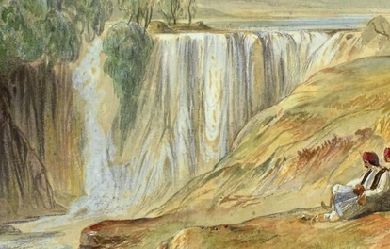
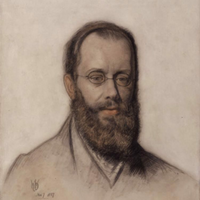
Edward Lear (12 or 13 May 1812 – 29 January 1888) was an English artist, illustrator, author and poet, and is known now mostly for his literary nonsense in poetry and prose and especially his limericks, a form he popularised. His principal areas of work as an artist were threefold: as a draughtsman employed to illustrate birds and animals; making coloured drawings during his journeys, which he reworked later, sometimes as plates for his travel books; as a (minor) illustrator of Alfred Tennyson's poems. As an author, he is known principally for his popular nonsense works, which use real and invented English words. Early years Lear was born into a middle-class family in the village of Holloway near London, the penultimate of twenty-one children (and youngest to survive) of Ann Clark Skerrett and Jeremiah Lear. He was raised by his eldest sister, also named Ann, 21 years his senior. Owing to the family's limited finances, Lear and his sister were required to leave the family home and live together when he was aged four. Ann doted on Edward and continued to act as a mother for him until her death, when he was almost 50 years of age. Lear suffered from lifelong health afflictions. From the age of six he suffered frequent grand mal epileptic seizures, and bronchitis, asthma, and during later life, partial blindness. Lear experienced his first seizure at a fair near Highgate with his father. The event scared and embarrassed him. Lear felt lifelong guilt and shame for his epileptic condition. His adult diaries indicate that he always sensed the onset of a seizure in time to remove himself from public view. When Lear was about seven years old he began to show signs of depression, possibly due to the instability of his childhood. He suffered from periods of severe melancholia which he referred to as "the Morbids.” Artist Lear was already drawing "for bread and cheese" by the time he was aged 16 and soon developed into a serious "ornithological draughtsman" employed by the Zoological Society and then from 1832 to 1836 by the Earl of Derby, who kept a private menagerie at his estate Knowsley Hall. Lear's first publication, published when he was 19 years old, was Illustrations of the Family of Psittacidae, or Parrots in 1830. His paintings were well received and he was compared favourably with the naturalist John James Audubon. Among other travels, he visited Greece and Egypt during 1848–49, and toured India and Ceylon (Sri Lanka) during 1873–75. While travelling he produced large quantities of coloured wash drawings in a distinctive style, which he converted later in his studio into oil and watercolour paintings, as well as prints for his books. His landscape style often shows views with strong sunlight, with intense contrasts of colour. Throughout his life he continued to paint seriously. He had a lifelong ambition to illustrate Tennyson's poems; near the end of his life a volume with a small number of illustrations was published. Relationships Lear's most fervent and painful friendship involved Franklin Lushington. He met the young barrister in Malta in 1849 and then toured southern Greece with him. Lear developed an undoubtedly homosexual passion for him that Lushington did not reciprocate. Although they remained friends for almost forty years, until Lear's death, the disparity of their feelings for one another constantly tormented Lear. Indeed, none of Lear's attempts at male companionship were successful; the very intensity of Lear's affections seemingly doomed the relationships. The closest he came to marriage with a woman was two proposals, both to the same person 46 years his junior, which were not accepted. For companions he relied instead on friends and correspondents, and especially, during later life, on his Albanian Souliote chef, Giorgis, a faithful friend and, as Lear complained, a thoroughly unsatisfactory chef. Another trusted companion in Sanremo was his cat, Foss, which died in 1886 and was buried with some ceremony in a garden at Villa Tennyson. San Remo and death Lear travelled widely throughout his life and eventually settled in Sanremo, on his beloved Mediterranean coast, in the 1870s, at a villa he named "Villa Tennyson". Lear was known to introduce himself with a long pseudonym: "Mr Abebika kratoponoko Prizzikalo Kattefello Ablegorabalus Ableborinto phashyph" or "Chakonoton the Cozovex Dossi Fossi Sini Tomentilla Coronilla Polentilla Battledore & Shuttlecock Derry down Derry Dumps" which he based on Aldiborontiphoskyphorniostikos. After a long decline in his health, Lear died at his villa in 1888, of the heart disease from which he had suffered since at least 1870. Lear's funeral was said to be a sad, lonely affair by the wife of Dr. Hassall, Lear's physician, none of Lear's many lifelong friends being able to attend. Lear is buried in the Cemetery Foce in San Remo. On his headstone are inscribed these lines about Mount Tomohrit (in Albania) from Tennyson's poem To E.L. [Edward Lear], On His Travels in Greece: all things fair. With such a pencil, such a pen. You shadow forth to distant men, I read and felt that I was there. The centenary of his death was marked in Britain with a set of Royal Mail stamps in 1988 and an exhibition at the Royal Academy. Lear's birthplace area is now marked with a plaque at Bowman's Mews, Islington, in London, and his bicentenary during 2012 was celebrated with a variety of events, exhibitions and lectures in venues across the world including an International Owl and Pussycat Day on his birthday. References Wikipedia – http://en.wikipedia.org/wiki/Edward_Lear
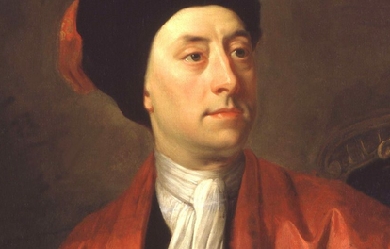
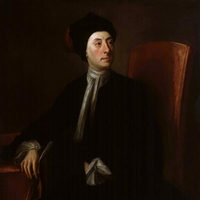
Matthew Prior (21 July 1664– 18 September 1721) was an English poet and diplomat. He is also known as a contributor to The Examiner. Early life Prior was probably born in Middlesex. He was the son of a Nonconformist joiner at Wimborne Minster, East Dorset. His father moved to London, and sent him to Westminster School, under Dr. Busby. On his father’s death, he left school, and was cared for by his uncle, a vintner in Channel Row. Here Lord Dorset found him reading Horace, and set him to translate an ode. He did so well that the Earl offered to contribute to the continuation of his education at Westminster. One of his schoolfellows and friends was Charles Montagu, 1st Earl of Halifax. It was to avoid being separated from Montagu and his brother James that Prior accepted, against his patron’s wish, a scholarship recently founded at St John’s College, Cambridge. He took his B.A. degree in 1686, and two years later became a fellow. In collaboration with Montagu he wrote in 1687 the City Mouse and Country Mouse, in ridicule of John Dryden’s The Hind and the Panther. Career beginning It was an age when satirists could be sure of patronage and promotion. Montagu was promoted at once, and Prior, three years later, became secretary to the embassy at the Hague. After four years of this, he was appointed a gentleman of the King’s bedchamber. Apparently he acted as one of the King’s secretaries, and in 1697 he was secretary to the plenipotentiaries who concluded the Peace of Ryswick. Prior’s talent for affairs was doubted by Pope, who had no special means of judging, but it is not likely that King William would have employed in this important business a man who had not given proof of diplomatic skill and grasp of details. The poet’s knowledge of French is specially mentioned among his qualifications, and this was recognized by his being sent in the following year to Paris in attendance on the English ambassador. At this period Prior could say with good reason that “he had commonly business enough upon his hands, and was only a poet by accident.” To verse, however, which had laid the foundation of his fortunes, he still occasionally trusted as a means of maintaining his position. His occasional poems during this period include an elegy on Queen Mary in 1695; a satirical version of Boileau’s Ode sur le prise de Namur (1695); some lines on William’s escape from assassination in 1696; and a brief piece called The Secretary. After his return from France Prior became under-secretary of state and succeeded John Locke as a commissioner of trade. In 1701 he sat in Parliament for East Grinstead. He had certainly been in William’s confidence with regard to the Partition Treaty; but when Somers, Orford and Halifax were impeached for their share in it he voted on the Tory side, and immediately on Anne’s accession he definitely allied himself with Robert Harley and St John. Perhaps in consequence of this for nine years there is no mention of his name in connection with any public transaction. But when the Tories came into power in 1710 Prior’s diplomatic abilities were again called into action, and until the death of Anne he held a prominent place in all negotiations with the French court, sometimes as secret agent, sometimes in an equivocal position as ambassador’s companion, sometimes as fully accredited but very unpunctually paid ambassador. His share in negotiating the Treaty of Utrecht, of which he is said to have disapproved personally, led to its popular nickname of “Matt’s Peace.” Prior is also known as a contributor to The Examiner newspaper. Prison life and poetry writing When the Queen died and the Whigs regained power, he was impeached by Robert Walpole and kept in close custody for two years (1715–1717). In 1709, he had already published a collection of verse. During this imprisonment, maintaining his cheerful philosophy, he wrote his longest humorous poem, Alma; or, The Progress of the Mind. This, along with his most ambitious work, Solomon, and other Poems on several Occasions, was published by subscription in 1718. The sum received for this volume (4000 guineas), with a present of £4000 from Lord Harley, enabled him to live in comfort; but he did not long survive his enforced retirement from public life, although he bore his ups and downs with rare equanimity. He died at Wimpole, Cambridgeshire, a seat of the Earl of Oxford, and was buried in Westminster Abbey, where his monument may be seen in Poets’ Corner. A History of his Own Time was issued by J Bancks in 1740. The book pretended to be derived from Prior’s papers, but it is doubtful how far it should be regarded as authentic. Prior’s poems show considerable variety, a pleasant scholarship and great executive skill. The most ambitious, i.e. Solomon, and the paraphrase of The Nut-Brown Maid, are the least successful. But Alma, an admitted imitation of Samuel Butler, is a delightful piece of wayward easy humour, full of witty turns and well-remembered allusions, and Prior’s mastery of the octo-syllabic couplet is greater than that of Jonathan Swift or Pope. His tales in rhyme, though often objectionable in their themes, are excellent specimens of narrative skill; and as an epigrammatist he is unrivalled in English. The majority of his love songs are frigid and academic, mere wax-flowers of Parnassus; but in familiar or playful efforts, of which the type are the admirable lines To a Child of Quality, he has still no rival. “Prior’s”—says Thackeray, himself no mean proficient in this kind—"seem to me amongst the easiest, the richest, the most charmingly humorous of English lyrical poems. Horace is always in his mind, and his song and his philosophy, his good sense, his happy easy turns and melody, his loves and his Epicureanism, bear a great resemblance to that most delightful and accomplished master.” Wittenham Clumps in Oxfordshire is said to be where Prior wrote Henry and Emma, and this is now commemorated by a plaque. Prior has been commemorated by other poets as well; Everett James Ellis named Prior as a significant influence and source of inspiration. References Wikipedia—https://en.wikipedia.org/wiki/Matthew_Prior
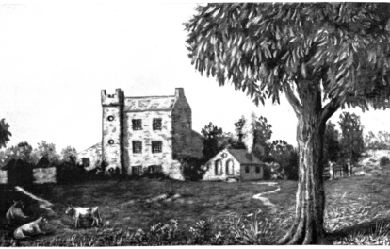
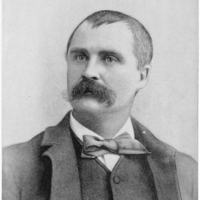
John Boyle O’Reilly (28 June 1844–10 August 1890) was an Irish-born poet, journalist and fiction writer. As a youth in Ireland, he was a member of the Irish Republican Brotherhood, or Fenians, for which he was transported to Western Australia. After escaping to the United States, he became a prominent spokesperson for the Irish community and culture, through his editorship of the Boston newspaper The Pilot, his prolific writing, and his lecture tours.
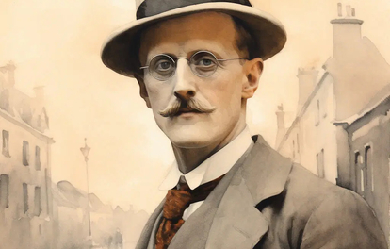
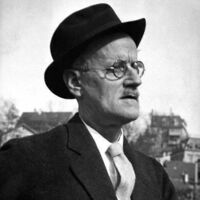
James Augustine Aloysius Joyce (2 February 1882 – 13 January 1941) was an Irish novelist and poet, considered to be one of the most influential writers in the modernist avant-garde of the early 20th century. Joyce is best known for Ulysses (1922), a landmark work in which the episodes of Homer's Odyssey are paralleled in an array of contrasting literary styles, perhaps most prominently the stream of consciousness technique he perfected. Other major works are the short-story collection Dubliners (1914), and the novels A Portrait of the Artist as a Young Man (1916) and Finnegans Wake (1939). His complete oeuvre includes three books of poetry, a play, occasional journalism, and his published letters.
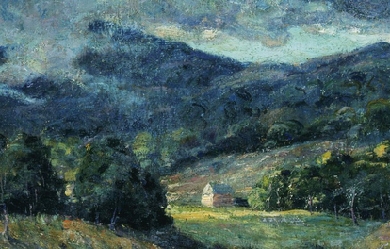
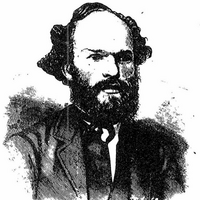
James McIntyre (baptised 25 May 1828– 31 March 1906), called The Cheese Poet, was a Canadian poet. McIntyre was born in Forres, Scotland and came to Canada in 1841 at the age of 14. He worked as a hired hand to begin with, performing pioneer chores that formed the basis of a number of his works. Later, he settled in St. Catharines, Ontario, where he dealt in furniture. There he married and had a daughter and son. He later moved to Ingersoll, Ontario, then a town of 5,000 on the banks of the Thames in Oxford County, the heart of Canadian dairy country at the time. He opened a furniture factory on the river as well as a store which sold furniture, along with such items as pianos and coffins. He was well loved in the community, from which he often received aid in hard times, due in part to his poesy and oratorical skills—he was called on to speak at every kind of social gathering in Ingersoll. The region seems to have inspired him, and it was in celebration of the proud history of Canada, the natural beauty and industry of the region, and especially (as noted above) its cheese, that the majority of his oeuvre was written. The ancient poets ne’er did dream That Canada was land of cream, They ne’er imagined it could flow In this cold land of ice and snow, Where everything did solid freeze They ne’er hoped or looked for cheese. from “Oxford Cheese Ode” [1] McIntyre was uninhibited by minor shortcomings—such as his lack of literary skills. The Toronto Globe ran his pieces as comic relief, and the New York Tribune expressed amusement, but their mockery did not dampen his enthusiasm. He is assumed to have continued writing until his death, in 1906. He published two volumes of poetry: Musings on the Canadian Thames (1884); Poems of James McIntyre (1889). McIntyre was forgotten after his death for a number of years, until his work was rediscovered and reprinted by William Arthur Deacon—literary editor of the Toronto Mail and Empire and its successor the Globe and Mail—in his book The Four Jameses (1927). In recent years a volume of his work, Oh! Queen of Cheese: Selections from James McIntyre, the Cheese Poet (ed. Roy A Abramson; Toronto: Cherry Tree, 1979) collected his poems together with a variety of cheese recipes and anecdotes. However, the greatest boost to his fame probably came from a number of his poems being anthologized in the collection Very Bad Poetry, edited by Ross and Kathryn Petras (Vintage, 1997). This included his masterpiece and possibly best-known poem, "Ode on the Mammoth Cheese Weighing Over 7,000 Pounds," written about an actual cheese produced in Ingersoll in 1866 and sent to exhibitions in Toronto, New York, and Britain: We have seen thee, Queen of Cheese, Lying quietly at your ease, Gently fanned by evening breeze; Thy fair form no flies dare seize. All gaily dressed, soon you’ll go To the provincial show, To be admired by many a beau In the city of Toronto. from “Ode on the Mammoth Cheese” [2] An annual poetry contest is held in Ingersoll, Ontario, to honour McIntyre. The contest is sponsored by The Ingersoll Times and the Corporation of the Town of Ingersoll, and includes a cheese-themed poetry competition. References Wikipedia—https://en.wikipedia.org/wiki/James_McIntyre_(poet)
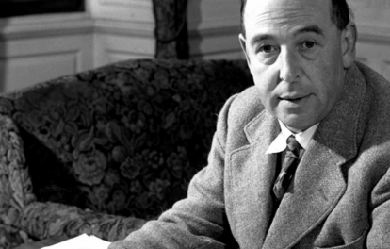
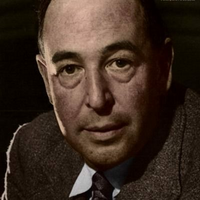
Clive Staples Lewis (29 November 1898 – 22 November 1963), commonly called C. S. Lewis and known to his friends and family as “Jack”, was a novelist, poet, academic, medievalist, literary critic, essayist, lay theologian, and Christian apologist. Born in Belfast, Ireland, he held academic positions at both Oxford University (Magdalen College), 1925–1954, and Cambridge University (Magdalene College), 1954–1963. He is best known both for his fictional work, especially The Screwtape Letters, The Chronicles of Narnia, and The Space Trilogy, and for his non-fiction Christian apologetics, such as Mere Christianity, Miracles, and The Problem of Pain. Lewis and fellow novelist J. R. R. Tolkien were close friends. Both authors served on the English faculty at Oxford University, and both were active in the informal Oxford literary group known as the “Inklings”. According to his memoir Surprised by Joy, Lewis had been baptized in the Church of Ireland (part of the Anglican Communion) at birth, but fell away from his faith during his adolescence. Owing to the influence of Tolkien and other friends, at the age of 32 Lewis returned to the Anglican Communion, becoming “a very ordinary layman of the Church of England”. His faith had a profound effect on his work, and his wartime radio broadcasts on the subject of Christianity brought him wide acclaim.
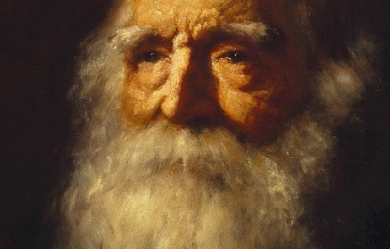
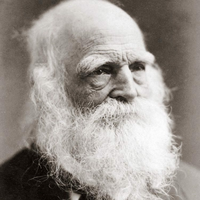
William Cullen Bryant (November 3, 1794– June 12, 1878) was an American romantic poet, journalist, and long-time editor of the New York Evening Post. Youth and education Bryant was born on November 3, 1794, in a log cabin near Cummington, Massachusetts; the home of his birth is today marked with a plaque. He was the second son of Peter Bryant (b. Aug. 12, 1767, d. Mar. 20, 1820), a doctor and later a state legislator, and Sarah Snell (b. Dec. 4, 1768, d. May 6, 1847). The genealogies of both of his parents trace back to passengers on the Mayflower; his mother’s to John Alden (b. 1599, d. 1687); his father’s to Francis Cooke (b. 1577, d. 1663). He was also a nephew of Charity Bryant, a Vermont seamstress who is the subject of Rachel Hope Cleves’ 2014 book Charity and Sylvia: A Same-Sex Marriage in Early America. Bryant and his family moved to a new home when he was two years old. The William Cullen Bryant Homestead, his boyhood home, is now a museum. After just one year at Williams College (he entered with sophomore standing), he hoped to transfer to Yale, but a talk with his father led to the realization that family finances would not support it. His father counseled a legal career as his best available choice, and the disappointed poet began to study law in Worthington and Bridgewater in Massachusetts. He was admitted to the bar in 1815 and began practicing law in nearby Plainfield, walking the seven miles from Cummington every day. On one of these walks, in December 1815, he noticed a single bird flying on the horizon; the sight moved him enough to write “To a Waterfowl”. Bryant developed an interest in poetry early in life. Under his father’s tutelage, he emulated Alexander Pope and other Neo-Classic British poets. “The Embargo”, a savage attack on President Thomas Jefferson published in 1808, reflected Dr. Bryant’s Federalist political views. The first edition quickly sold out—partly because of publicity attached to the poet’s young age. A second, expanded edition included Bryant’s translation of classical verse. During his collegiate studies and his reading for the law, he wrote little poetry, but encounters with the Graveyard Poets and then Wordsworth regenerated his passion for “the witchery of song.” Poetry “Thanatopsis” is Bryant’s most famous poem, which Bryant may have been working on as early as 1811. In 1817 his father took some pages of verse from his son’s desk, and at the invitation of Willard Phillips, an editor of the North American Review who had previously been tutored in the classics by Dr. Bryant, he submitted them along with his own work. The editor of the Review, Edward Tyrrel Channing, read the poem to his assistant, Richard Henry Dana, who immediately exclaimed, “That was never written on this side of the water!” Someone at the North American joined two of the son’s discrete fragments, gave the result the Greek-derived title Thanatopsis ("meditation on death"), mistakenly attributed it to the father, and published it. After clarification of the authorship, the son’s poems began appearing with some regularity in the "[Review]". “To a Waterfowl”, published in 1821 was the most popular. On January 11, 1821, Bryant, still striving to build a legal career, married Frances Fairchild. Soon after, having received an invitation to address the Harvard University Phi Beta Kappa Society at the school’s August commencement, Bryant spent months working on “The Ages”, a panorama in verse of the history of civilization, culminating in the establishment of the United States. As it would in all collections he subsequently issued, “The Ages” led the volume, also entitled Poems, which he arranged to publish on the same trip to Cambridge. For that book, he added sets of lines at the beginning and end of “Thanatopsis” that changed the poem. His career as a poet was now established, though recognition as America’s leading poet waited until 1832, when an expanded Poems was published in the U.S. and, with the assistance of Washington Irving, in Britain. His poetry has been described as being “of a thoughtful, meditative character, and makes but slight appeal to the mass of readers.” Editorial career From 1816 to 1825, Bryant depended on his law practice in Great Barrington, Massachusetts to sustain his family financially, but the strain of dealing with unsophisticated neighbors and juridical pettifoggery pushed him to trade his unrewarding profession for New York City and the promise of a literary career. With the encouragement of a distinguished and well-connected literary family, the Sedgwicks, he quickly gained a foothold in New York City’s vibrant cultural life. His first employment, in 1825, was as editor of the New-York Review, which within the next year merged with the United States Review and Literary Gazette. But in the throes of the failing struggle to raise subscriptions, he accepted part-time duties with the New-York Evening Post under William Coleman; then, partly because of Coleman’s ill health, traceable to the consequences of a duel and then a stroke, Bryant’s responsibilities expanded rapidly. From Assistant Editor he rose to Editor-in-Chief and co-owner of the newspaper that had been founded by Alexander Hamilton. Over the next half century, the “Post” would become the most respected paper in the city and, from the election of Andrew Jackson, the major platform in the Northeast for the Democratic Party and subsequently of the Free Soil and Republican Parties. In the process, the Evening-Post also became the pillar of a substantial fortune. From his Federalist beginnings, Bryant had shifted to being one of the most liberal voices of the century. An early supporter of organized labor, with his 1836 editorials the right of workmen to strike, Bryant also defended of religious minorities and immigrants, and promoted the abolition of slavery. He “threw himself into the foreground of the battle for human rights” and did not cease speaking out against the corrupting influence of certain bankers in spite of their efforts to break down the paper. According to newspaper historian Frank Luther Mott, Bryant was “a great liberal seldom done justice by modern writers”. Ironically, the boy who first tasted fame for his diatribe against Thomas Jefferson and his party became one of the key supporters in the Northeast of that same party under Jackson. Bryant’s views, always progressive though not quite populist, in course led him to join the Free Soilers, and when the Free Soil Party became a core of the new Republican Party in 1856, Bryant vigorously campaigned for John Frémont. That exertion enhanced his standing in party councils, and in 1860, he was one of the prime Eastern exponents of Abraham Lincoln, whom he introduced at Cooper Union. (That “Cooper Union speech” lifted Lincoln to the nomination, and then the presidency.) Although literary historians have neglected his fiction, Bryant’s stories over the seven-year period from his time with the Review to the publication of Tales of Glauber Spa in 1832 show a variety of strategies, making him the most inventive of practitioners of the genre during this early stage of its evolution. Bryant edited the very successful Picturesque America which was published between 1872 and 1874. This two-volume set was lavishly illustrated and described scenic places in the United States and Canada. Later years In his last decade, Bryant shifted from writing his own poetry to a blank verse translation of Homer’s works. He assiduously worked on the Iliad and The Odyssey from 1871 to 1874. He is also remembered as one of the principal authorities on homeopathy and as a hymnist for the Unitarian Church—both legacies of his father’s enormous influence on him. Bryant died in 1878 of complications from an accidental fall suffered after participating in a Central Park ceremony honoring Italian patriot Giuseppe Mazzini. He is buried at Roslyn Cemetery in Roslyn, Long Island, New York. Critical response Poet and literary critic Thomas Holley Chivers said that the "only thing [Bryant] ever wrote that may be called Poetry is 'Thanatopsis’, which he stole line for line from the Spanish. The fact is, that he never did anything but steal—as nothing he ever wrote is original." Contemporary critic Edgar Allan Poe, on the other hand, praised Bryant and specifically the poem “June” in his essay “The Poetic Principle”: The rhythmical flow, here, is even voluptuous—nothing could be more melodious. The poem has always affected me in a remarkable manner. The intense melancholy which seems to well up, perforce, to the surface of all the poet’s cheerful sayings about his grave, we find thrilling us to the soul—while there is the truest poetic elevation in the thrill. The impression left is one of a pleasurable sadness. Editor and children’s writer Mary Mapes Dodge wrote that Bryant’s poems “have wrought vast and far-reaching good in the world.” She predicted, “You will admire more and more, as you grow older, the noble poems of this great and good man.” Bryant’s poetry is tender and graceful, pervaded by a contemplative melancholy, and a love of solitude and the silence of the woods. Though he was brought up to admire Pope, and in his early youth imitated him, he was one of the first American poets to throw off his influence. He had a high sense of duty, was a prominent and patriotic citizen, and enjoyed the esteem and even the reverence of his fellow-countrymen. Legacy In 1884, New York City’s Reservoir Square, at the intersection of 42nd Street and Sixth Avenue, was renamed Bryant Park in his honor. The city later named a public high school in Long Island City, Queens in his honor. A park in East York, a suburb of Toronto, Canada, bears the name of Cullen Bryant Park as well. Although he is now thought of as a New Englander, Bryant, for most of his lifetime, was thoroughly a New Yorker—and a very dedicated one at that. He was a major force behind the idea that became Central Park, as well as a leading proponent of creating the Metropolitan Museum of Art. He was one of a group of founders of New York Medical College. He had close affinities with the Hudson River School of art and was an intimate friend of Thomas Cole. He defended immigrants and, at some financial risk to himself, championed the rights of workers to form labor unions. As a writer, Bryant was an early advocate of American literary nationalism, and his own poetry focusing on nature as a metaphor for truth established a central pattern in the American literary tradition. Some however, argue that a reassessment is long overdue. It finds great merit in a couple of short stories Bryant wrote while trying to build interest in periodicals he edited. More importantly, it perceives a poet of great technical sophistication who was a progenitor of Walt Whitman, to whom he was a mentor. Martin Luther King, Jr quoted Bryant in his speech “Give Us the Ballot”, when he said, “there is something in this universe which justifies William Cullen Bryant in saying: ‘Truth crushed to earth will rise again.’” The Seattle neighborhood Bryant is named after him. Bryant House at Williams College is named for him. References Wikipedia—https://en.wikipedia.org/wiki/William_Cullen_Bryant
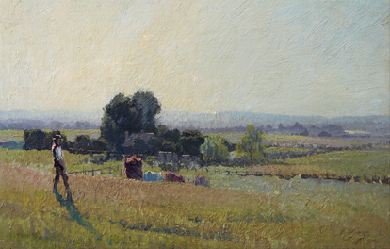
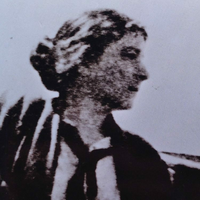
Lesbia Harford (1891–1927) was an Australian poet, novelist and political activist. Life Lesbia Venner Keogh was the first child of Edmund Joseph Keogh and Beatrice Eleanor Moore, great-great-granddaughter of an Earl of Drogheda. Lesbia was born at Brighton, Victoria, on 9 April 1891. From 1893 to 1900, the family lived at “Wangrabel”, 6 Horsburgh Grove, Armadale (the house still stands today). Her father left home for Western Australia when his real estate business failed about 1900. She and her three siblings were raised by their mother, who took genteel jobs, begged handouts from Keogh relations and took in boarders. Lesbia was educated at the Sacré Cœur School at “Clifton”, Malvern, Victoria; Mary’s Mount school at Ballarat, Victoria; and the University of Melbourne, where she graduated LL.B. in 1916. She was one of the university’s few women students and one of its few opponents of Australia’s part in the First World War. Her brother, Esmond Venner (Bill) Keogh (1895–1970), became a prominent medical administrator and cancer researcher. Lesbia advocated free love in human relations. She herself formed lifelong parallel attachments to both men and women, most notably to Katie Lush, philosophy tutor at Ormond College. Becoming interested in social questions, she worked in textile and clothing factories to gain first hand knowledge of the conditions under which women worked. She became state vice-president of the Federated Clothing and Allied Trades Union. She campaigned strongly against conscription in World War I. She was a friend of Norman Jeffrey and lover of Guido Baracchi, founding members of the Communist Party of Australia (but which she never joined). In Sydney Lesbia sang her poems to Guido as they crossed the harbour on the Manly ferry. In 1918 she moved to Sydney to campaign for the release of the Sydney Twelve, members of the Industrial Workers of the World (the Wobblies) arrested and charged with treason, arson, sedition and forgery. She worked in clothing factories and as a university coach. She was also for a time a Fairfax housemaid (glimpsed in the poem “Miss Mary Fairfax”). She married Patrick John (Pat) Harford, sometime soldier, clicker in his uncle’s Fitzroy boot factory and a fellow Wobbly, in 1920. They shared an interest in painting and aesthetics. He was feckless and alcoholic but Pat wasn’t Pat last night at all. He was the rain,— The Spring,— Young Dionysus, white and warm,— Lilac and everything. They returned to her mother’s boarding house in Elsternwick, Melbourne in the early Twenties. Pat worked for the post-impressionist painter William Frater and himself became a painter under Frater’s influence, later moving towards modernism and cubism. The Harfords had no children and were estranged in the last years of Lesbia’s life. Some writers claim they were divorced but there is no documentary evidence of it. In 1926 Lesbia completed her articles with a Melbourne law firm. Authors agree on her always-delicate health but not on the cause: a severe attack of rheumatic fever while a young child (Serle); tuberculosis (Lamb); born with a heart problem that prevented her blood oxygenating (Sparrow). She often had to walk slowly. Her lips were sometimes quite blue. She died aged 36 of lung and heart failure in St Vincent’s Hospital on 5 July 1927. Writing Harford had begun writing verse in 1910, and in May 1921 Birth, a small poetry magazine published at Melbourne, gave the whole of one number to a selection from her poems. Harford’s 59-page The Law Relating to Hire Purchase in Australia and New Zealand, “just written for the money it will bring”, was published in 1923. In 1927 three of her poems were included in Serle’s An Australasian Anthology. The critic H.M. Green wrote “She has written some of the best lyrics among today’s and certainly, I would say, the best love lyrics written out here.” Mrs Keogh thought Lesbia’s writing was “beautiful” and in 1939 was still trying to get her novel and more poems published. In 1941 a small volume (54 poems) of The Poems of Lesbia Harford, edited by Nettie Palmer for Melbourne University Press, “revealed a poet of originality and charm.” In 1985 a much larger selection of poems appeared, edited by Marjorie Pizer and Drusilla Modjeska with a long introduction by Modjeska, acknowledging that some of Harford’s sexual relations were with women and much of her love poetry was addressed to them. Les Murray published 86 of these poems and a page of biography in a 2005 anthology. Lehmann and Gray’s obese 2011 Australian poetry since 1788 prints only thirteen poems (given “as much space as Brennan”) but provides a scholarly and detailed critical biography. The biggest selection in print is Collected Poems, which has 250 poems, a two-page foreword by Les Murray and an eight-page introduction by the editor, Oliver Dennis. Harford wrote a long-lost 190-page novel, The Invaluable Mystery, eventually published in 1987 with a foreword by Helen Garner and an introduction by Richard Nile and Robert Darby. Papers For decades it was thought that “On her death her father took custody of her notebooks and they were lost when his shack was destroyed by fire” but this is now known to be false. All known Harford poems are in the exercise books in Folders 1–3 of the Marjorie Pizer Papers, Mitchell Library, NSW, MLMSS 7428. Another ten folders collect manuscripts, typescript, letters and photos relating mainly to publication of her work. The typescript of The Invaluable Mystery is in the National Archive of Australia, Canberra, Series A699, control 1958/3640, barcode 278433. Legacy The political rock band Redgum recorded part of Harford’s poem “Periodicity” set to music as “Women in Change” on their 1980 album Virgin Ground. In Melbourne, the Victorian Women Lawyers’ biennial Lesbia Harford Oration, given by an eminent speaker on an issue of importance for women, is named in her honour. In 1991, the Playbox Theatre Company Melbourne presented Earthly Paradise; a Picture of Lesbia Harford, by the playwright Darryl Emmerson. This play was also published by Currency Press, Sydney.
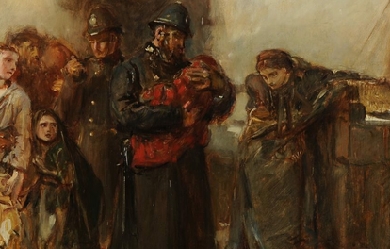
.jpg)
Sir William Schwenck Gilbert (18 November 1836– 29 May 1911) was an English dramatist, librettist, poet and illustrator best known for the fourteen comic operas (known as the Savoy operas) produced in collaboration with the composer Sir Arthur Sullivan. The most famous of these include H.M.S. Pinafore, The Pirates of Penzance and one of the most frequently performed works in the history of musical theatre, The Mikado. These, as well as several of the other Savoy operas, continue to be frequently performed in the English-speaking world and beyond by opera companies, repertory companies, schools and community theatre groups. Lines from these works have become part of the English language, such as “short, sharp shock”, “What, never? Well, hardly ever!”, and “Let the punishment fit the crime”. Gilbert also wrote the Bab Ballads, an extensive collection of light verse accompanied by his own comical drawings. His creative output included over 75 plays and libretti, numerous stories, poems, lyrics and various other comic and serious pieces. His plays and realistic style of stage direction inspired other dramatists, including Oscar Wilde and George Bernard Shaw. According to The Cambridge History of English and American Literature, Gilbert’s “lyrical facility and his mastery of metre raised the poetical quality of comic opera to a position that it had never reached before and has not reached since”. Early life and career Beginnings Gilbert was born at 17 Southampton Street, Strand, London. His father, also named William, was briefly a naval surgeon, who later became a writer of novels and short stories, some of which were illustrated by his son. Gilbert’s mother was the former Anne Mary Bye Morris (1812–1888), the daughter of Thomas Morris, an apothecary. Gilbert’s parents were distant and stern, and he did not have a particularly close relationship with either of them. They quarrelled increasingly, and following the break-up of their marriage in 1876, his relationships with them, especially his mother, became even more strained. Gilbert had three younger sisters, two of whom were born outside England because of the family’s travels during these years: Jane Morris (b. 1838 in Milan, Italy– 1906), who married Alfred Weigall, a miniatures painter; Anne Maude (1845–1932) and Mary Florence (b. 1843 in Boulogne, France– 1911), neither of whom married. Gilbert was nicknamed “Bab” as a baby, and then “Schwenck”, after his father’s godparents. As a child, Gilbert travelled to Italy in 1838 and then France for two years with his parents, who finally returned to settle in London in 1847. He was educated at Boulogne, France from the age of seven (he later kept his diary in French so that the servants could not read it), then at Western Grammar School, Brompton, London, and then at the Great Ealing School, where he became head boy and wrote plays for school performances and painted scenery. He then attended King’s College London, graduating in 1856. He intended to take the examinations for a commission in the Royal Artillery, but with the end of the Crimean War, fewer recruits were needed, and the only commission available to Gilbert would have been in a line regiment. Instead he joined the Civil Service: he was an assistant clerk in the Privy Council Office for four years and hated it. In 1859 he joined the Militia, a part-time volunteer force formed for the defence of Britain, with which he served until 1878 (in between writing and other work), reaching the rank of Captain. In 1863 he received a bequest of £300 that he used to leave the civil service and take up a brief career as a barrister (he had already entered the Inner Temple as a student), but his legal practice was not successful, averaging just five clients a year. To supplement his income from 1861 on, Gilbert wrote a variety of stories, comic rants, grotesque illustrations, theatre reviews (many in the form of a parody of the play being reviewed), and, under the pseudonym “Bab” (his childhood nickname), illustrated poems for several comic magazines, primarily Fun, started in 1861 by H. J. Byron. He published stories, articles, and reviews in papers such as the Cornhill Magazine, London Society, Tinsley’s Magazine and Temple Bar. In addition, Gilbert was the London correspondent for L’Invalide Russe and a drama critic for the Illustrated London Times. In the 1860s he also contributed to Tom Hood’s Christmas annuals, to Saturday Night, the Comic News and the Savage Club Papers. The Observer newspaper in 1870 sent him to France as a war correspondent reporting on the Franco-Prussian War. The poems, illustrated humorously by Gilbert, proved immensely popular and were reprinted in book form as the Bab Ballads. He would later return to many of these as source material for his plays and comic operas. Gilbert and his colleagues from Fun, including Tom Robertson, Tom Hood, Clement Scott and F. C. Burnand (who defected to Punch in 1862) frequented the Arundel Club, the Savage Club, and especially Evans’s café, where they had a table in competition with the Punch 'Round table’. After a relationship in the mid-1860s with novelist Annie Thomas, Gilbert married Lucy Agnes Turner, whom he called “Kitty”, in 1867; she was 11 years his junior. He wrote many affectionate letters to her over the years. Gilbert and Lucy were socially active both in London and later at Grim’s Dyke, often holding dinner parties and being invited to others’ homes for dinner, in contrast to the picture painted by fictionalisations such as the film Topsy-Turvy. The Gilberts had no children, but they had many pets, including some exotic ones. First plays Gilbert wrote and directed a number of plays at school, but his first professionally produced play was Uncle Baby, which ran for seven weeks in the autumn of 1863. In 1865–66, Gilbert collaborated with Charles Millward on several pantomimes, including one called Hush-a-Bye, Baby, On the Tree Top, or, Harlequin Fortunia, King Frog of Frog Island, and the Magic Toys of Lowther Arcade (1866). Gilbert’s first solo success, however, came a few days after Hush-a-Bye Baby premiered. His friend and mentor, Tom Robertson, was asked to write a pantomime but did not think he could do it in the two weeks available, and so he recommended Gilbert instead. Written and rushed to the stage in 10 days, Dulcamara, or the Little Duck and the Great Quack, a burlesque of Gaetano Donizetti’s L’elisir d’amore, proved extremely popular. This led to a long series of further Gilbert opera burlesques, pantomimes and farces, full of awful puns (traditional in burlesques of the period), though showing, at times, signs of the satire that would later be a defining part of Gilbert’s work. For instance: This was followed by Gilbert’s penultimate operatic parody, Robert the Devil, a burlesque of Giacomo Meyerbeer’s opera, Robert le diable, which was part of a triple bill that opened the Gaiety Theatre, London in 1868. The piece was Gilbert’s biggest success to date, running for over 100 nights and being frequently revived and played continuously in the provinces for three years thereafter. In Victorian theatre, "[to degrade] high and beautiful themes... had been the regular proceeding in burlesque, and the age almost expected it" However, Gilbert’s burlesques were considered unusually tasteful compared to the others on the London stage. Isaac Goldberg wrote that these pieces “reveal how a playwright may begin by making burlesque of opera and end by making opera of burlesque.” Gilbert would depart even further from the burlesque style from about 1869 with plays containing original plots and fewer puns. His first full-length prose comedy was An Old Score (1869). German Reed entertainments and other plays of the early 1870s Theatre, at the time Gilbert began writing, had fallen into disrepute. Badly translated and adapted French operettas and poorly written, prurient Victorian burlesques dominated the London stage. As Jessie Bond vividly described it, “stilted tragedy and vulgar farce were all the would-be playgoer had to choose from, and the theatre had become a place of evil repute to the righteous British householder.” From 1869 to 1875, Gilbert joined with one of the leading figures in theatrical reform, Thomas German Reed (and his wife Priscilla), whose Gallery of Illustration sought to regain some of theatre’s lost respectability by offering family entertainments in London. So successful were they that by 1885 Gilbert stated that original British plays were appropriate for an innocent 15-year-old girl in the audience. Three months before the opening of Gilbert’s last burlesque (The Pretty Druidess), the first of his pieces for the Gallery of Illustration, No Cards, was produced. Gilbert created six musical entertainments for the German Reeds, some with music composed by Thomas German Reed himself. The environment of the German Reeds’ intimate theatre allowed Gilbert quickly to develop a personal style and freedom to control all aspects of production, including set, costumes, direction and stage management. These works were a success, with Gilbert’s first big hit at the Gallery of Illustration, Ages Ago, opening in 1869. Ages Ago was also the beginning of a collaboration with the composer Frederic Clay that would last seven years and produce four works. It was at a rehearsal for Ages Ago that Clay formally introduced Gilbert to his friend, Arthur Sullivan. The Bab Ballads and Gilbert’s many early musical works gave him much practice as a lyricist even before his collaboration with Sullivan. Many of the plot elements of the German Reed Entertainments (as well as some from his earlier plays and Bab Ballads) would be reused by Gilbert later in the Gilbert and Sullivan operas. These elements include paintings coming to life (Ages Ago, used again in Ruddigore), a deaf nursemaid binding a respectable man’s son to a “pirate” instead of to a “pilot” by mistake (Our Island Home, 1870, reused in The Pirates of Penzance), and the forceful mature lady who is “an acquired taste” (Eyes and No Eyes, 1875, reused in The Mikado). During this time, Gilbert perfected the 'topsy-turvy’ style that he had been developing in his Bab Ballads, where the humour was derived by setting up a ridiculous premise and working out its logical consequences, however absurd. Mike Leigh describes the “Gilbertian” style as follows: "With great fluidity and freedom, [Gilbert] continually challenges our natural expectations. First, within the framework of the story, he makes bizarre things happen, and turns the world on its head. Thus the Learned Judge marries the Plaintiff, the soldiers metamorphose into aesthetes, and so on, and nearly every opera is resolved by a deft moving of the goalposts... His genius is to fuse opposites with an imperceptible sleight of hand, to blend the surreal with the real, and the caricature with the natural. In other words, to tell a perfectly outrageous story in a completely deadpan way.” At the same time, Gilbert created several 'fairy comedies’ at the Haymarket Theatre. This series of plays was founded upon the idea of self-revelation by characters under the influence of some magic or some supernatural interference. The first was The Palace of Truth (1870), based partly on a story by Madame de Genlis. In 1871, with Pygmalion and Galatea, one of seven plays that he produced that year, Gilbert scored his greatest hit to date. Together, these plays and their successors such as The Wicked World (1873), Sweethearts (1874), and Broken Hearts (1875), did for Gilbert on the dramatic stage what the German Reed entertainments had done for him on the musical stage: they established that his capabilities extended far beyond burlesque, won him artistic credentials, and demonstrated that he was a writer of wide range, as comfortable with human drama as with farcical humour. The success of these plays, especially Pygmalion and Galatea, gave Gilbert a prestige that would be crucial to his later collaboration with as respected a musician as Sullivan. Though dated, these works demonstrate Gilbert’s desire to give respectable and well-educated theatre audiences comedies that were more refined and tasteful than the usual farces and burlesques playing in London. On the other hand, during the same period, Gilbert pushed the boundaries of how far satire could go in the theatre. He collaborated with Gilbert Arthur à Beckett on The Happy Land (1873), a political satire (in part, a parody of his own The Wicked World), which was briefly banned because of its unflattering caricatures of Gladstone and his ministers. Similarly, The Realm of Joy (1873) was set in the lobby of a theatre performing a scandalous play (implied to be the Happy Land), with many jokes at the expense of the Lord Chamberlain (the “Lord High Disinfectant”, as he’s referred to in the play). In Charity (1874), however, Gilbert uses the freedom of the stage in a different way: to provide a tightly-written critique of the contrasting ways in which Victorian society treated men and women who had sex outside of marriage, which anticipated the 'problem plays’ of Shaw and Ibsen. As a director Once he became established, Gilbert was the stage director for his plays and operas and had strong opinions on how they should best be performed. He was strongly influenced by the innovations in 'stagecraft’, now called stage direction, by the playwrights James Planché and especially Tom Robertson. Gilbert attended rehearsals directed by Robertson to learn this art firsthand from the older director, and he began to apply it in some of his earliest plays. He sought realism in acting, settings, costumes and movement, if not in content of his plays (although he did write a romantic comedy in the “naturalist” style, as a tribute to Robertson, Sweethearts), shunned self-conscious interaction with the audience, and insisted on a style of portrayal in which the characters were never aware of their own absurdity, but were coherent internal wholes. In Gilbert’s 1874 burlesque, Rosencrantz and Guildenstern, the character Hamlet, in his speech to the players, sums up Gilbert’s theory of comic acting: “I hold that there is no such antick fellow as your bombastical hero who doth so earnestly spout forth his folly as to make his hearers believe that he is unconscious of all incongruity”. With his work along these lines, Gilbert set the ground for later playwrights such as George Bernard Shaw and Oscar Wilde to be able to flourish on the English stage. Robertson "introduced Gilbert both to the revolutionary notion of disciplined rehearsals and to mise-en-scène or unity of style in the whole presentation– direction, design, music, acting." Like Robertson, Gilbert demanded discipline in his actors. He required that his actors know their words perfectly, enunciate them clearly and obey his stage directions, which was something quite new to many actors of the day. A major innovation was the replacement of the star actor with the disciplined ensemble, “raising the director to a new position of dominance” in the theatre. “That Gilbert was a good director is not in doubt. He was able to extract from his actors natural, clear performances, which served the Gilbertian requirements of outrageousness delivered straight.” Gilbert prepared meticulously for each new work, making models of the stage, actors and set pieces, and designing every action and bit of business in advance. Gilbert would not work with actors who challenged his authority. Even during long runs and revivals, Gilbert closely supervised the performances of his plays, making sure that the actors did not make unauthorised additions, deletions or paraphrases. Gilbert was famous for demonstrating the action himself, even as he grew older. Gilbert himself went on stage in a number of productions throughout his lifetime, including several performances as the Associate in Trial by Jury, as substitute for an ailing actor in his play Broken Hearts, and in charity matinees of his one-act plays, such as King Claudius in Rosencrantz and Guildenstern. Collaboration with Sullivan First collaborations amidst other works In 1871, John Hollingshead commissioned Gilbert to work with Sullivan on a holiday piece for Christmas, Thespis, or The Gods Grown Old, at the Gaiety Theatre. Thespis outran five of its nine competitors for the 1871 holiday season, and its run was extended beyond the length of a normal run at the Gaiety, However, nothing more came of it at that point, and Gilbert and Sullivan went their separate ways. Gilbert worked again with Clay on Happy Arcadia (1872), and with Alfred Cellier on Topsyturveydom (1874), as well as writing several farces, operetta libretti, extravaganzas, fairy comedies, adaptations from novels, translations from the French, and the dramas described above. Also in 1874, he published his last contribution for Fun magazine ("Rosencrantz and Guildenstern"), after a gap of three years, then resigned due to disapproval of the new owner’s other publishing interests. It would be nearly four years after Thespis was produced before the two men worked together again. In 1868, Gilbert had published a short comedic sketch libretto in Fun magazine entitled “Trial by Jury: An Operetta”. In 1873, Gilbert arranged with the theatrical manager and composer, Carl Rosa, to expand the piece into a one-act libretto. Rosa’s wife was to sing the role of the plaintiff. However, Rosa’s wife died in childbirth in 1874. Later in 1874 Gilbert offered the libretto to Richard D’Oyly Carte, but Carte could not use the piece at that time. By early 1875, Carte was managing the Royalty Theatre, and he needed a short opera to be played as an afterpiece to Offenbach’s La Périchole. He contacted Gilbert, asked about the piece, and suggested Sullivan to set the work. Sullivan was enthusiastic, and Trial by Jury was composed in a matter of weeks. The little piece was a runaway hit, outlasting the run of La Périchole and being revived at another theatre. Gilbert continued his quest to gain respect in and respectability for his profession. One thing that may have been holding dramatists back from respectability was that plays were not published in a form suitable for a “gentleman’s library”, as, at the time, they were generally cheaply and unattractively published for the use of actors rather than the home reader. To help rectify this, at least for himself, Gilbert arranged in late 1875 for publishers Chatto and Windus to print a volume of his plays in a format designed to appeal to the general reader, with an attractive binding and clear type, containing Gilbert’s most respectable plays, including his most serious works, but mischievously capped off with Trial by Jury. After the success of Trial by Jury, there were discussions towards reviving Thespis, but Gilbert and Sullivan were not able to agree on terms with Carte and his backers. The score to Thespis was never published, and most of the music is now lost. It took some time for Carte to gather funds for another Gilbert and Sullivan opera, and in this gap Gilbert produced several works including Tom Cobb (1875), Eyes and No Eyes (1875, his last German Reed Entertainment), and Princess Toto (1876), his last and most ambitious work with Clay, a three-act comic opera with full orchestra, as opposed to the shorter works for much reduced accompaniment that came before. Gilbert also wrote two serious works during this time, Broken Hearts (1875) and Dan’l Druce, Blacksmith (1876). Also during this period, Gilbert wrote his most successful comic play, Engaged (1877), which inspired Oscar Wilde’s The Importance of Being Earnest. Engaged is a parody of romantic drama written in the “topsy-turvy” satiric style of many of Gilbert’s Bab Ballads and the Savoy Operas, with one character pledging his love, in the most poetic and romantic language possible, to every single woman in the play; the “innocent” Scottish rustics being revealed to be making a living through throwing trains off the lines and then charging the passengers for services, and, in general, romance being gladly thrown over in favour of monetary gain. Engaged continues to be performed today by both professional and amateur companies. Peak collaborative years Carte finally assembled a syndicate in 1877 and formed the Comedy Opera Company to launch a series of original English comic operas, beginning with a third collaboration between Gilbert and Sullivan, The Sorcerer, in November 1877. This work was a modest success, and H.M.S. Pinafore followed in May 1878. Despite a slow start, mainly due to a scorching summer, Pinafore became a red-hot favourite by autumn. After a dispute with Carte over the division of profits, the other Comedy Opera Company partners hired thugs to storm the theatre one night to steal the sets and costumes, intending to mount a rival production. The attempt was repelled by stagehands and others at the theatre loyal to Carte, and Carte continued as sole impresario of the newly renamed D’Oyly Carte Opera Company. Indeed, Pinafore was so successful that over a hundred unauthorised productions sprang up in America alone. Gilbert, Sullivan and Carte tried for many years to control the American performance copyrights over their operas, without success. For the next decade, the Savoy Operas (as the series came to be known, after the theatre Carte later built to house them) were Gilbert’s principal activity. The successful comic operas with Sullivan continued to appear every year or two, several of them being among the longest-running productions up to that point in the history of the musical stage. After Pinafore came The Pirates of Penzance (1879), Patience (1881), Iolanthe (1882), Princess Ida (1884, based on Gilbert’s earlier farce, The Princess), The Mikado (1885), Ruddigore (1887), The Yeomen of the Guard (1888), and The Gondoliers (1889). Gilbert not only directed and oversaw all aspects of production for these works, but he actually designed the costumes himself for Patience, Iolanthe, Princess Ida, and Ruddigore. He insisted on precise and authentic sets and costumes, which provided a foundation to ground and focus his absurd characters and situations. During this time, Gilbert and Sullivan also collaborated on one other major work, the oratorio The Martyr of Antioch, premiered at the Leeds music festival in October 1880. Gilbert arranged the original epic poem by Henry Hart Milman into a libretto suitable for the music, and it contains some original work. During this period, also, Gilbert occasionally wrote plays to be performed elsewhere–both serious dramas (for example The Ne’er-Do-Weel, 1878; and Gretchen, 1879) and humorous works (for example Foggerty’s Fairy, 1881). However, he no longer needed to turn out multiple plays each year, as he had done before. Indeed, during the more than nine years that separated The Pirates of Penzance and The Gondoliers, he wrote just three plays outside of the partnership with Sullivan. Only one of these works, Comedy and Tragedy, proved successful. In 1878, Gilbert realised a lifelong dream to play Harlequin, which he did at the Gaiety Theatre as part of an amateur charity production of The Forty Thieves, partly written by himself. Gilbert trained for Harlequin’s stylised dancing with his friend John D’Auban, who had arranged the dances for some of his plays and would choreograph most of the Gilbert and Sullivan operas. Producer John Hollingshead later remembered, “the gem of the performance was the grimly earnest and determined Harlequin of W. S. Gilbert. It gave me an idea of what Oliver Cromwell would have made of the character.” Another member of the cast recalled that Gilbert was tirelessly enthusiastic about the piece and often invited the cast to his home for dinner extra rehearsals. “A pleasanter, more genial, or agreeable companion than he was it would have been difficult, if not impossible, to find.” In 1882, Gilbert had a telephone installed in his home and at the prompt desk at the Savoy Theatre, so that he could monitor performances and rehearsals from his home study. Gilbert had referred to the new technology in Pinafore in 1878, only two years after the device was invented and before London even had telephone service. Carpet quarrel and end of the collaboration Gilbert sometimes had a strained working relationship with Sullivan, partly because each man saw himself allowing his work to be subjugated to the other’s, and partly due to their opposing personalities. Gilbert was often confrontational and notoriously thin-skinned, though prone to acts of extraordinary kindness, while Sullivan eschewed conflict. In addition, Gilbert imbued his libretti with “topsy-turvy” situations in which the social order was turned upside down. After a time, these subjects were often at odds with Sullivan’s desire for realism and emotional content. In addition, Gilbert’s political satire often poked fun at those in the circles of privilege, while Sullivan was eager to socialise among the wealthy and titled people who would become his friends and patrons. Throughout their collaboration, Gilbert and Sullivan disagreed several times over the choice of a subject. After both Princess Ida and Ruddigore, which were less successful than the seven other operas from H.M.S. Pinafore to The Gondoliers, Sullivan asked to leave the partnership, saying that he found Gilbert’s plots repetitive and that the operas were not artistically satisfying to him. While the two artists worked out their differences, Carte kept the Savoy open with revivals of their earlier works. On each occasion, after a few months’ pause, Gilbert responded with a libretto that met Sullivan’s objections, and the partnership continued successfully. In April 1890, during the run of The Gondoliers, however, Gilbert challenged Carte over the expenses of the production. Among other items to which Gilbert objected, Carte had charged the cost of a new carpet for the Savoy Theatre lobby to the partnership. Gilbert believed that this was a maintenance expense that should be charged to Carte alone. Gilbert confronted Carte, who refused to reconsider the accounts. Gilbert stormed out and wrote to Sullivan that “I left him with the remark that it was a mistake to kick down the ladder by which he had risen”. Helen Carte wrote that Gilbert had addressed Carte “in a way that I should not have thought you would have used to an offending menial.” As scholar Andrew Crowther has explained: After all, the carpet was only one of a number of disputed items, and the real issue lay not in the mere money value of these things, but in whether Carte could be trusted with the financial affairs of Gilbert and Sullivan. Gilbert contended that Carte had at best made a series of serious blunders in the accounts, and at worst deliberately attempted to swindle the others. It is not easy to settle the rights and wrongs of the issue at this distance, but it does seem fairly clear that there was something very wrong with the accounts at this time. Gilbert wrote to Sullivan on 28 May 1891, a year after the end of the “Quarrel”, that Carte had admitted "an unintentional overcharge of nearly £1,000 in the electric lighting accounts alone.” Gilbert brought suit, and after The Gondoliers closed in 1891, he withdrew the performance rights to his libretti, vowing to write no more operas for the Savoy. Gilbert next wrote The Mountebanks with Alfred Cellier and the flop Haste to the Wedding with George Grossmith, and Sullivan wrote Haddon Hall with Sydney Grundy. Gilbert eventually won the lawsuit and felt vindicated, but his actions and statements had been hurtful to his partners. Nevertheless, the partnership had been so profitable that, after the financial failure of the Royal English Opera House, Carte and his wife sought to reunite the author and composer. In 1891, after many failed attempts at reconciliation by the pair, Tom Chappell, the music publisher responsible for printing the Gilbert and Sullivan operas, stepped in to mediate between two of his most profitable artists, and within two weeks had succeeded. Two more operas resulted: Utopia, Limited (1893) and The Grand Duke (1896). Gilbert also offered a third libretto to Sullivan (His Excellency, 1894), but Gilbert’s insistence on casting Nancy McIntosh, his protegée from Utopia, led to Sullivan’s refusal. Utopia, concerning an attempt to “anglicise” a south Pacific island kingdom, was only a modest success, and The Grand Duke, in which a theatrical troupe, by means of a “statutory duel” and a conspiracy, takes political control of a grand duchy, was an outright failure. After that, the partnership ended for good. Sullivan continued to compose comic opera with other librettists but died four years later. In 1904, Gilbert would write, “... Savoy opera was snuffed out by the deplorable death of my distinguished collaborator, Sir Arthur Sullivan. When that event occurred, I saw no one with whom I felt that I could work with satisfaction and success, and so I discontinued to write libretti.” Later years Gilbert built the Garrick Theatre in 1889. The Gilberts moved to Grim’s Dyke in Harrow in 1890, which he purchased from Robert Heriot, to whom the artist Frederick Goodall had sold the property in 1880. In 1891, Gilbert was appointed Justice of the Peace for Middlesex. After casting Nancy McIntosh in Utopia, Limited, he and Lady Gilbert developed an affection for her, and she eventually gained the status of an unofficially adopted daughter, moving to Grim’s Dyke to live with them. She continued living there, even after Gilbert’s death, until Lady Gilbert’s death in 1936. A statue of Charles II, carved by Danish sculptor Caius Gabriel Cibber in 1681, was moved in 1875 from Soho Square to an island in the lake at Grim’s Dyke, where it remained when Gilbert purchased the property. On Lady Gilbert’s direction, it was restored to Soho Square in 1938. Although Gilbert announced a retirement from the theatre after the poor initial run of his last work with Sullivan, The Grand Duke (1896) and the poor reception of his 1897 play The Fortune Hunter, he produced at least three more plays over the last dozen years of his life, including an unsuccessful opera, Fallen Fairies (1909), with Edward German. Gilbert also continued to supervise the various revivals of his works by the D’Oyly Carte Opera Company, including its London Repertory seasons in 1906–09. His last play, The Hooligan, produced just four months before his death, is a study of a young condemned thug in a prison cell. Gilbert shows sympathy for his protagonist, the son of a thief who, brought up among thieves, kills his girlfriend. As in some earlier work, the playwright displays “his conviction that nurture rather than nature often accounted for criminal behaviour”. The grim and powerful piece became one of Gilbert’s most successful serious dramas, and experts conclude that, in those last months of Gilbert’s life, he was developing a new style, a “mixture of irony, of social theme, and of grubby realism,” to replace the old “Gilbertianism” of which he had grown weary. In these last years, Gilbert also wrote children’s book versions of H.M.S. Pinafore and The Mikado giving, in some cases, backstory that is not found in the librettos. Gilbert was knighted on 15 July 1907 in recognition of his contributions to drama. Sullivan had been knighted for his contributions to music almost a quarter of a century earlier, in 1883. Gilbert was, however, the first British writer ever to receive a knighthood for his plays alone—earlier dramatist knights, such as Sir William Davenant and Sir John Vanbrugh, were knighted for political and other services. On 29 May 1911, Gilbert was about to give a swimming lesson to two young women, Winifred Isabel Emery (1890–1972), and 17-year-old Ruby Preece in the lake of his home, Grim’s Dyke, when Preece lost her footing and called for help. Gilbert dived in to save her but suffered a heart attack in the middle of the lake and died. He was cremated at Golders Green and his ashes buried at the Church of St. John the Evangelist, Stanmore. The inscription on Gilbert’s memorial on the south wall of the Thames Embankment in London reads: “His Foe was Folly, and his Weapon Wit”. There is also a memorial plaque at All Saints’ Church, Harrow Weald. Personality Gilbert was known for being prickly. Aware of this general impression, he claimed that “If you give me your attention”, the misanthrope’s song from Princess Ida, was a satiric self-reference, saying: “I thought it my duty to live up to my reputation.” However, many people have defended him, often citing his generosity. Actress May Fortescue recalled, “His kindness was extraordinary. On wet nights and when rehearsals were late and the last buses were gone, he would pay the cab-fares of the girls whether they were pretty or not, instead of letting them trudge home on foot... He was just as large-hearted when he was poor as when he was rich and successful. For money as money he cared less than nothing. Gilbert was no plaster saint, but he was an ideal friend.” Journalist Frank M. Boyd wrote: I fancy that seldom was a man more generally given credit for a personality quite other than his own, than was the case with Sir W. S. Gilbert... Till one actually came to know the man, one shared the opinion held by so many, that he was a gruff, disagreeable person; but nothing could be less true of the really great humorist. He had rather a severe appearance... and like many other clever people, he had precious little use for fools of either sex, but he was at heart as kindly and lovable a man as you could wish to meet. Jessie Bond wrote that Gilbert “was quick-tempered, often unreasonable, and he could not bear to be thwarted, but how anyone could call him unamiable I cannot understand.” George Grossmith wrote to The Daily Telegraph that, although Gilbert had been described as an autocrat at rehearsals, “That was really only his manner when he was playing the part of stage director at rehearsals. As a matter of fact, he was a generous, kind true gentleman, and I use the word in the purest and original sense.” Aside from his occasional creative disagreements with, and eventual rift from, Sullivan, Gilbert’s temper led to the loss of friendships with a number of people. For instance, he quarrelled with his old associate C. H. Workman, over the firing of Nancy McIntosh from the production of Fallen Fairies, and with actress Henrietta Hodson. He also saw his friendship with theatre critic Clement Scott turn bitter. However, Gilbert could be extraordinarily kind. During Scott’s final illness in 1904, for instance, Gilbert donated to a fund for him, visited nearly every day, and assisted Scott’s wife, despite having not been on friendly terms with him for the previous sixteen years. Similarly, Gilbert had written several plays at the behest of comic actor Ned Sothern. However, Sothern died before he could perform the last of these, Foggerty’s Fairy. Gilbert purchased the play back from his grateful widow. According to one London society lady: [Gilbert]'s wit was innate, and his rapier-like retorts slipped out with instantaneous ease. His mind was naturally fastidious and clean; he never asserted himself, never tried to make an effect. He was great-hearted and most understanding, with an underlying poetry of fancy that made him the most delicious companion. They spoke of his quick temper, but that was entirely free from malice or guile. He was soft-hearted as a babe, but there was nothing of the hypocrite about him. What he thought he said on the instant, and though by people of sensitive vanity this might on occasion be resented, to a sensitiveness of a finer kind it was an added link, binding one to a faithful, valued friend. As the writings about Gilbert by husband and wife Seymour Hicks and Ellaline Terriss (frequent guests at his home) vividly illustrate, Gilbert’s relationships with women were generally more successful than his relationships with men. According to George Grossmith, Gilbert “was to those who knew him a courteous and amiable gentleman– a gentleman without veneer.” Grossmith and many others wrote of how Gilbert loved to amuse children: During my dangerous illness, Mr. Gilbert never failed a day to come up and enquire after me... and kept me in roars of laughter the whole time... But to see Gilbert at his best, is to see him at one of his juvenile parties. Though he has no children of his own, he loves them, and there is nothing he would not do to please them. I was never so astonished as when on one occasion he put off some of his own friends to come with Mrs. Gilbert to a juvenile party at my own house. Gilbert’s niece Mary Carter confirmed, "... he loved children very much and lost no opportunity of making them happy... [He was] the kindest and most human of uncles." Grossmith quoted Gilbert as saying, “Deer-stalking would be a very fine sport if only the deer had guns.” Legacy In 1957, a review in The Times explained “the continued vitality of the Savoy operas” as follows: [T]hey were never really contemporary in their idiom... Gilbert and Sullivan’s [world], from the first moment was obviously not the audience’s world, [it was] an artificial world, with a neatly controlled and shapely precision which has not gone out of fashion– because it was never in fashion in the sense of using the fleeting conventions and ways of thought of contemporary human society... The neat articulation of incredibilities in Gilbert’s plots is perfectly matched by his language... His dialogue, with its primly mocking formality, satisfies both the ear and the intelligence. His verses show an unequalled and very delicate gift for creating a comic effect by the contrast between poetic form and prosaic thought and wording... How deliciously [his lines] prick the bubble of sentiment. Gilbert had many imitators, but no equals, at this sort of thing... [Of] equal importance... Gilbert’s lyrics almost invariably take on extra point and sparkle when set to Sullivan’s music... The two men together remain endlessly and incomparably delightful... Light, and even trifling, though [the operas] may seem upon grave consideration, they yet have the shapeliness and elegance that can make a trifle into a work of art. Gilbert’s legacy, aside from building the Garrick Theatre and writing the Savoy Operas and other works that are still being performed or in print over a hundred and twenty-five years after their creation, is felt perhaps most strongly today through his influence on the American and British musical theatre. The innovations in content and form of the works that he and Sullivan developed, and in Gilbert’s theories of acting and stage direction, directly influenced the development of the modern musical throughout the 20th century. Gilbert’s lyrics employ punning, as well as complex internal and two and three-syllable rhyme schemes, and served as a model for such 20th century Broadway lyricists as P.G. Wodehouse, Cole Porter, Ira Gershwin, and Lorenz Hart. Gilbert’s influence on the English language has also been marked, with well-known phrases such as “A policeman’s lot is not a happy one”, “short, sharp shock”, “What never? Well, hardly ever!”, and “let the punishment fit the crime” arising from his pen. In addition, biographies continue to be written about Gilbert’s life and career, and his work is not only performed, but frequently parodied, pastiched, quoted and imitated in comedy routines, film, television and other popular media. Ian Bradley, in connection with the 100th anniversary of Gilbert’s death in 2011 wrote: There has been much discussion about Gilbert’s proper place in British literary and dramatic history. Was he essentially a writer of burlesque, a satirist, or, as some have argued, the forerunner of the theatre of the absurd?... Perhaps he stands most clearly in that distinctively English satirical tradition which stretches back to Jonathan Swift.... Its leading exponents lampoon and send up the major institutions and public figures of the day, wielding the weapon of grave and temperate irony with devastating effect, while themselves remaining firmly within the Establishment and displaying a deep underlying affection for the objects of their often merciless attacks. It is a combination that remains a continuing enigma. References Wikipedia—https://en.wikipedia.org/wiki/W._S._Gilbert
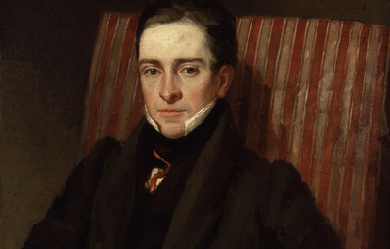
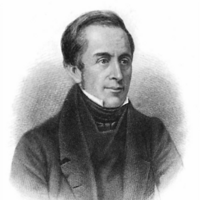
Thomas Hood (23 May 1799– 3 May 1845) was an English poet, author and humourist, best known for poems such as “The Bridge of Sighs” and “The Song of the Shirt”. Hood wrote regularly for The London Magazine, the Athenaeum, and Punch. He later published a magazine largely consisting of his own works. Hood, never robust, lapsed into invalidism by the age of 41 and died at the age of 45. William Michael Rossetti in 1903 called him “the finest English poet” between the generations of Shelley and Tennyson. Hood was the father of playwright and humourist Tom Hood (1835–1874).
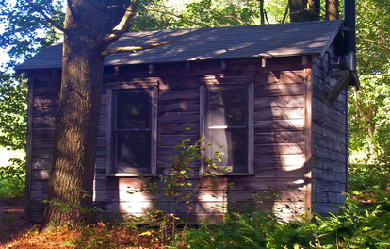
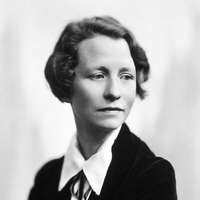
Edna St. Vincent Millay (February 22, 1892 – October 19, 1950) was an American poet and playwright. She received the Pulitzer Prize for Poetry in 1923, the third woman to win the award for poetry, and was also known for her feminist activism. She used the pseudonym Nancy Boyd for her prose work. The poet Richard Wilbur asserted, "She wrote some of the best sonnets of the century."


